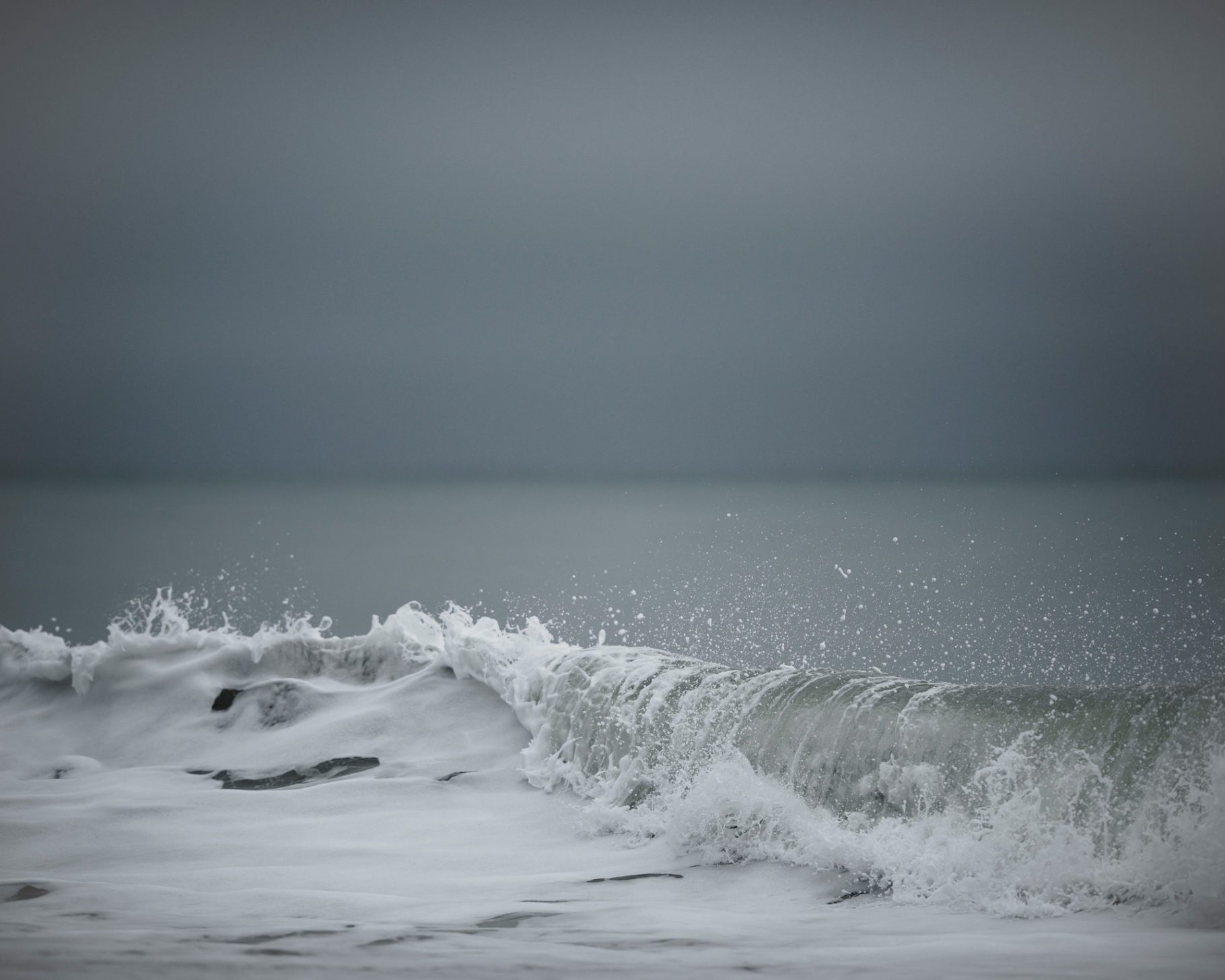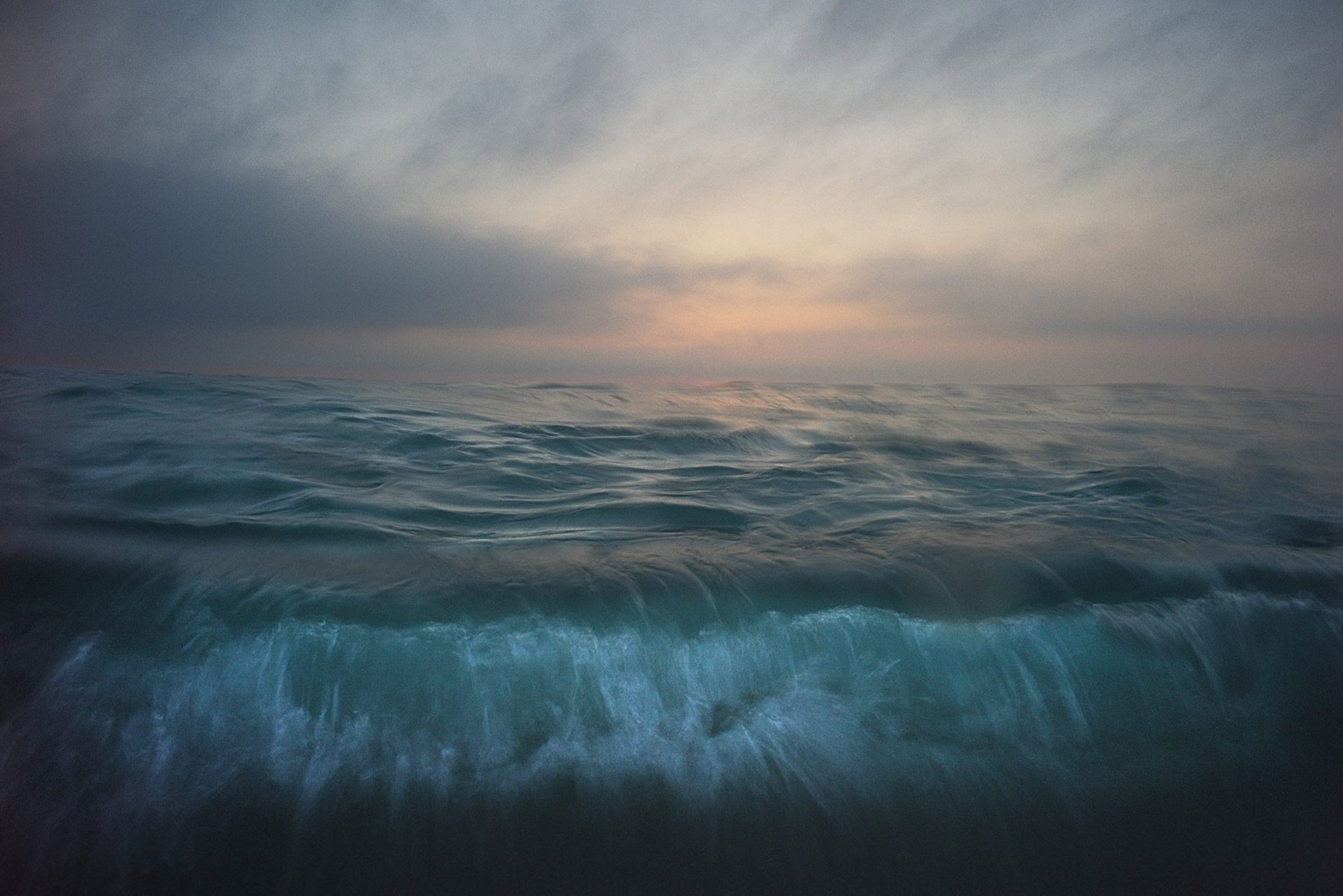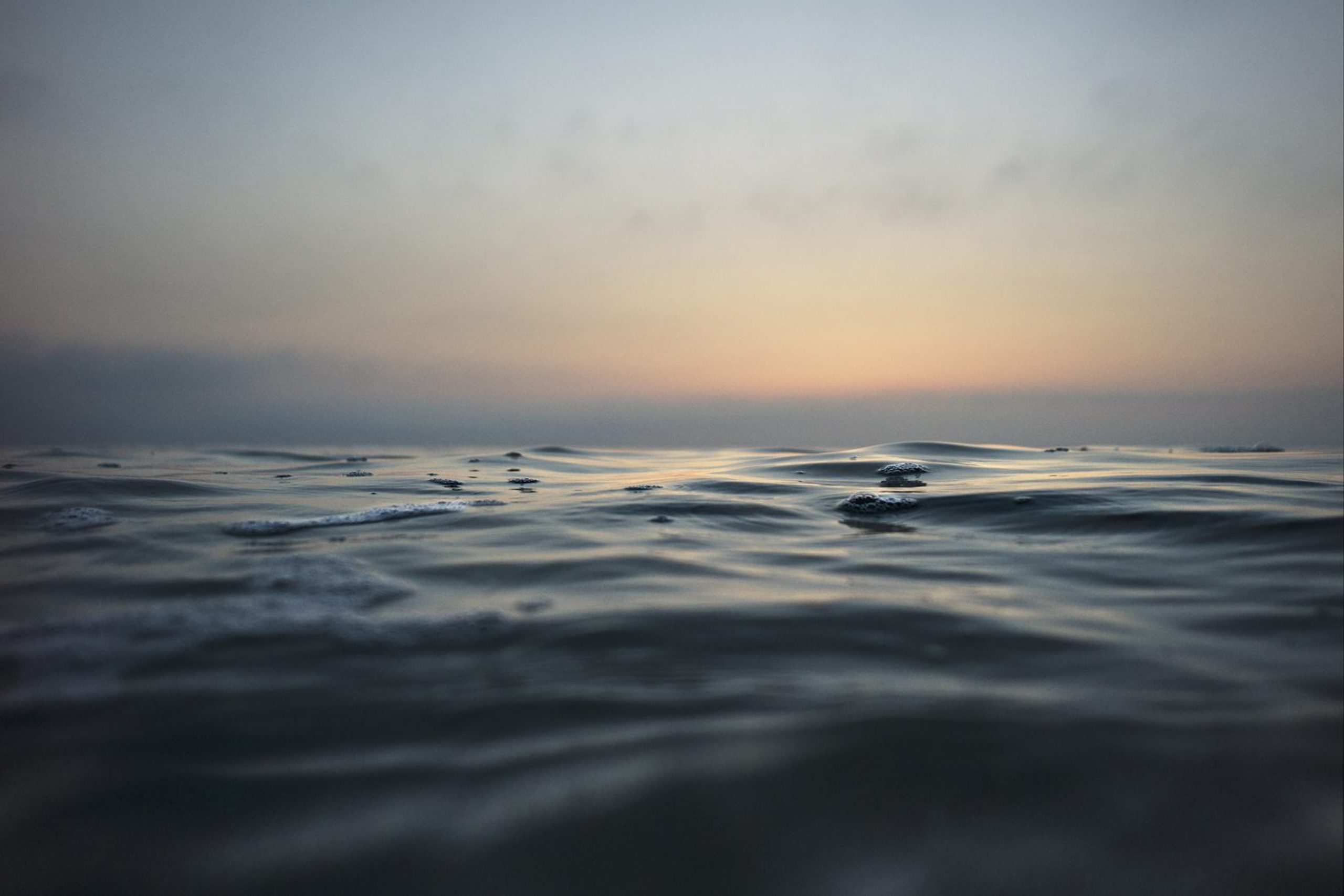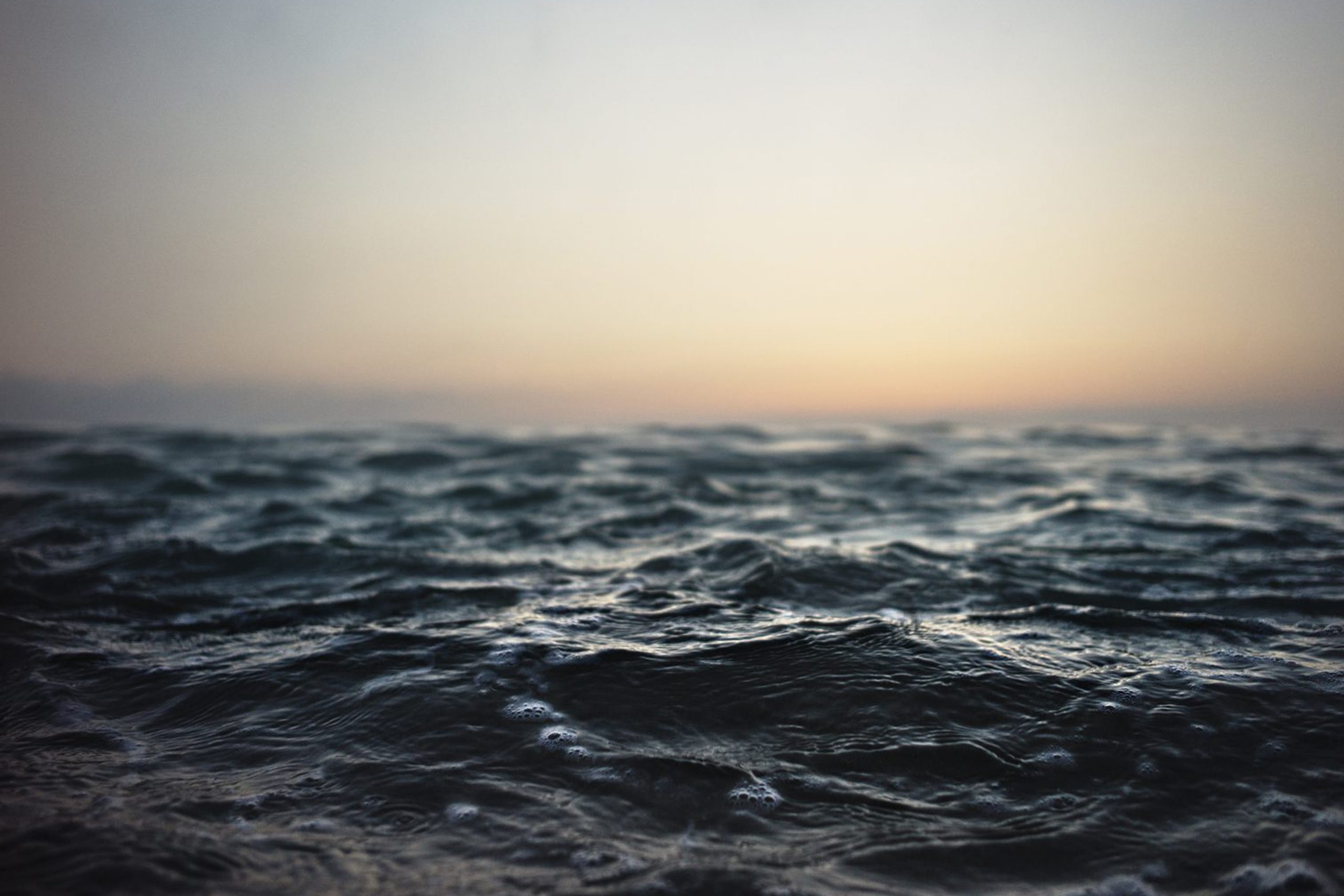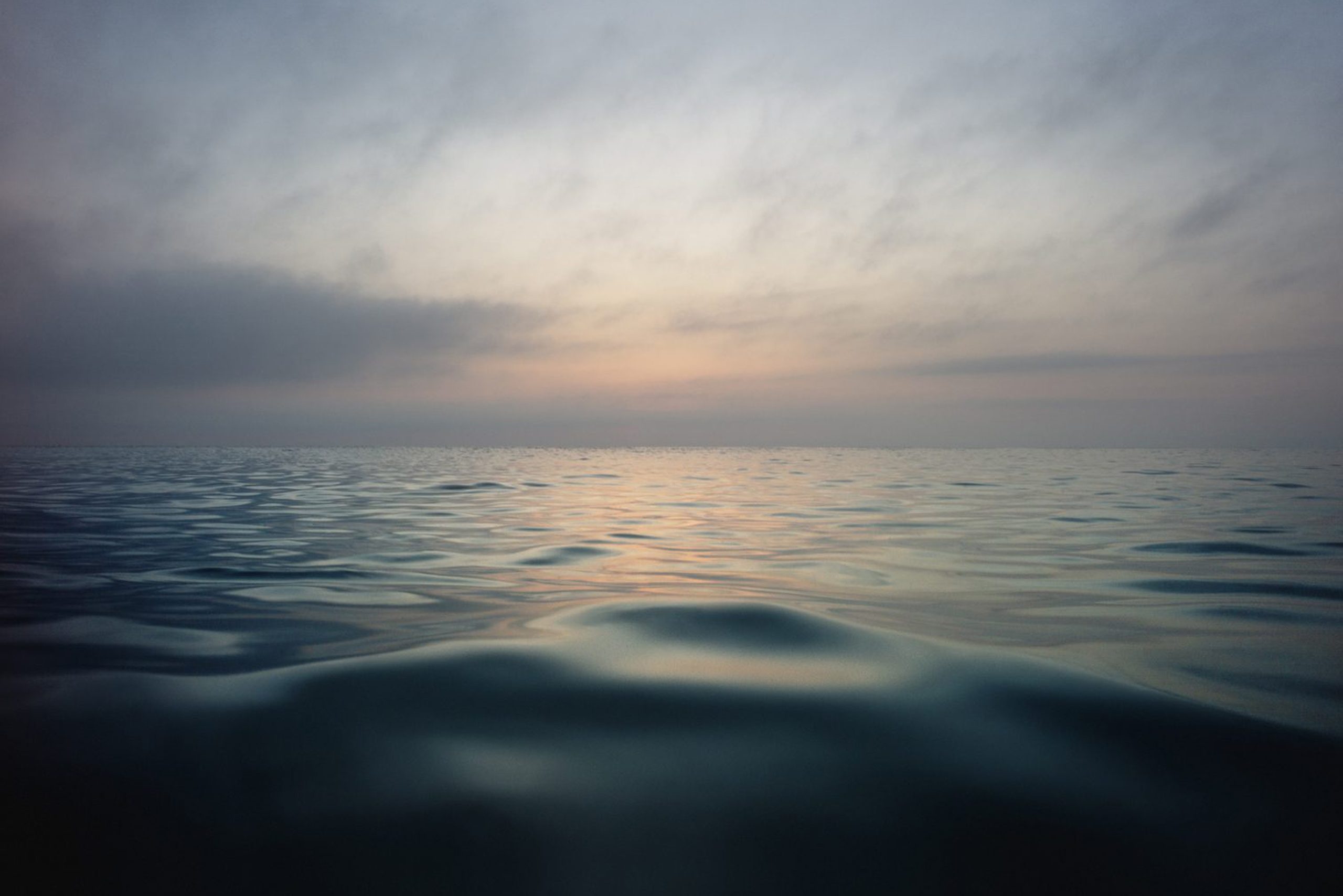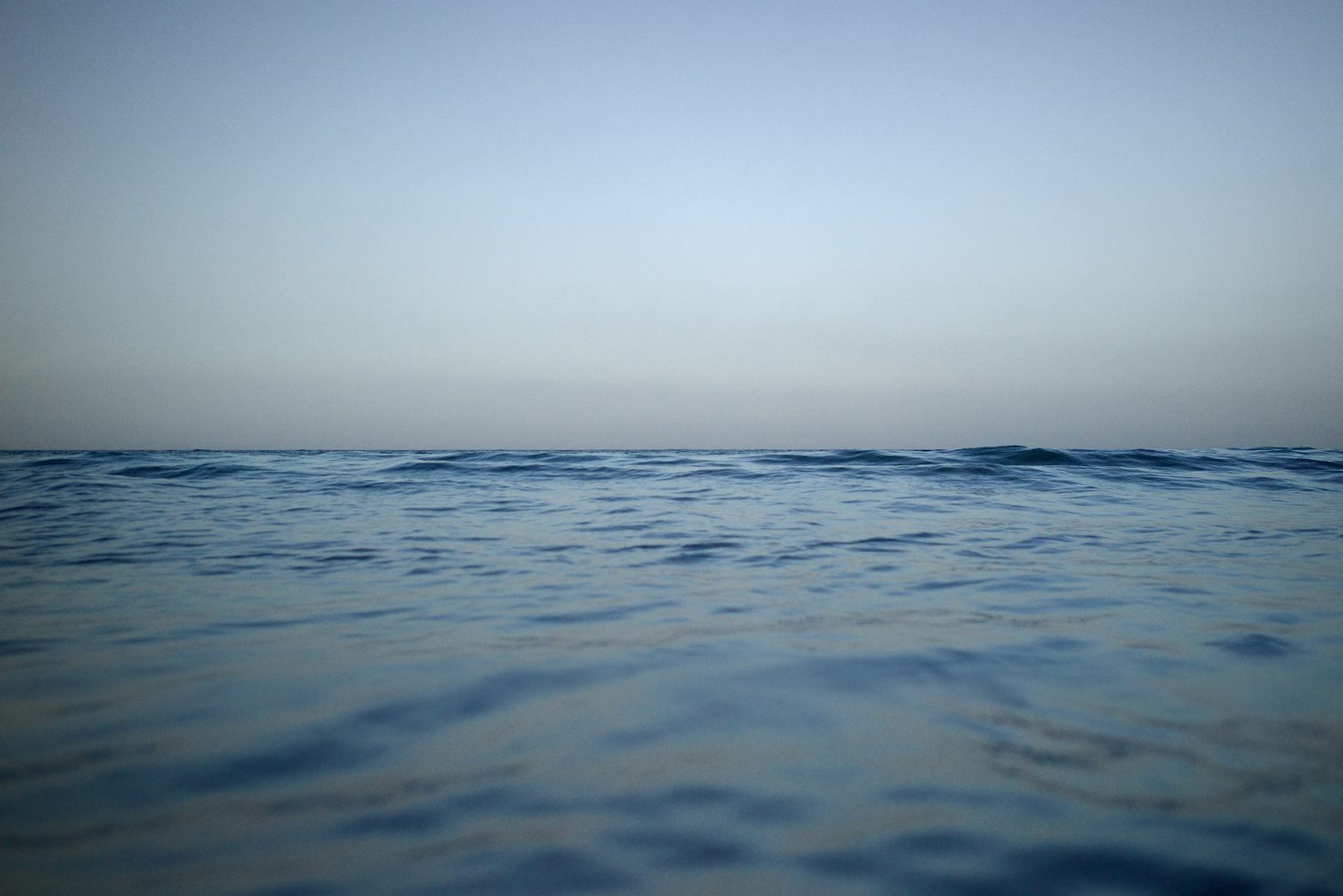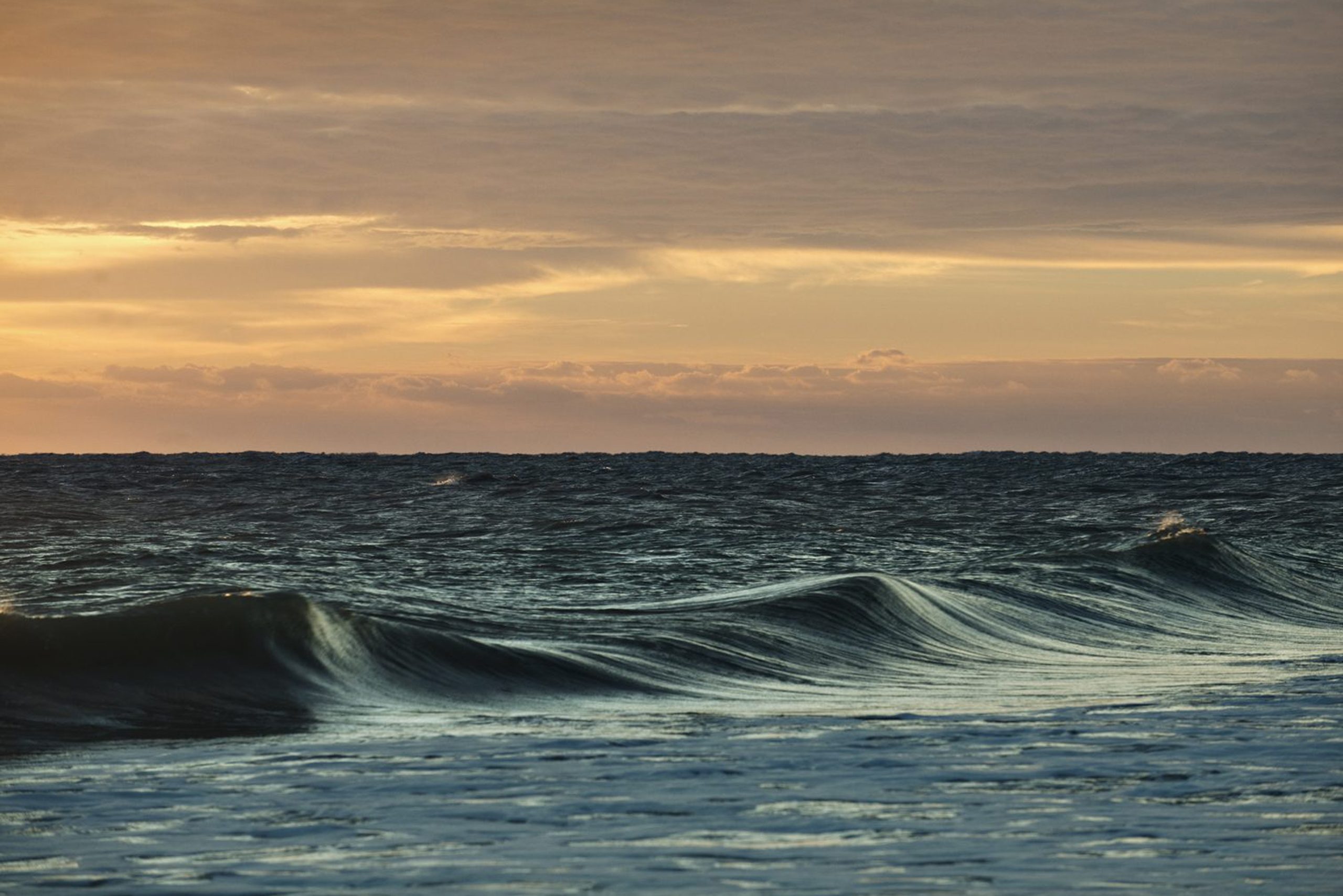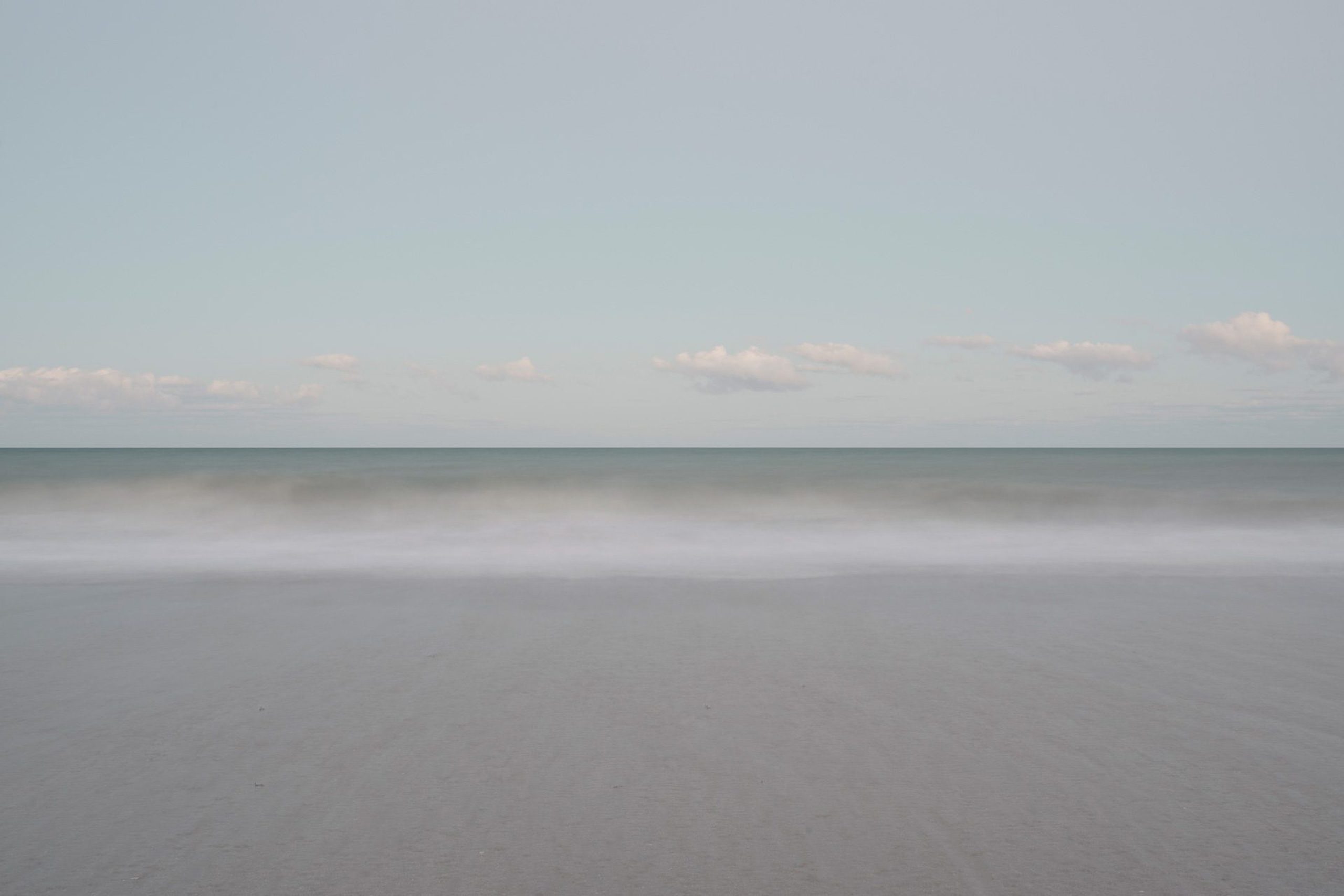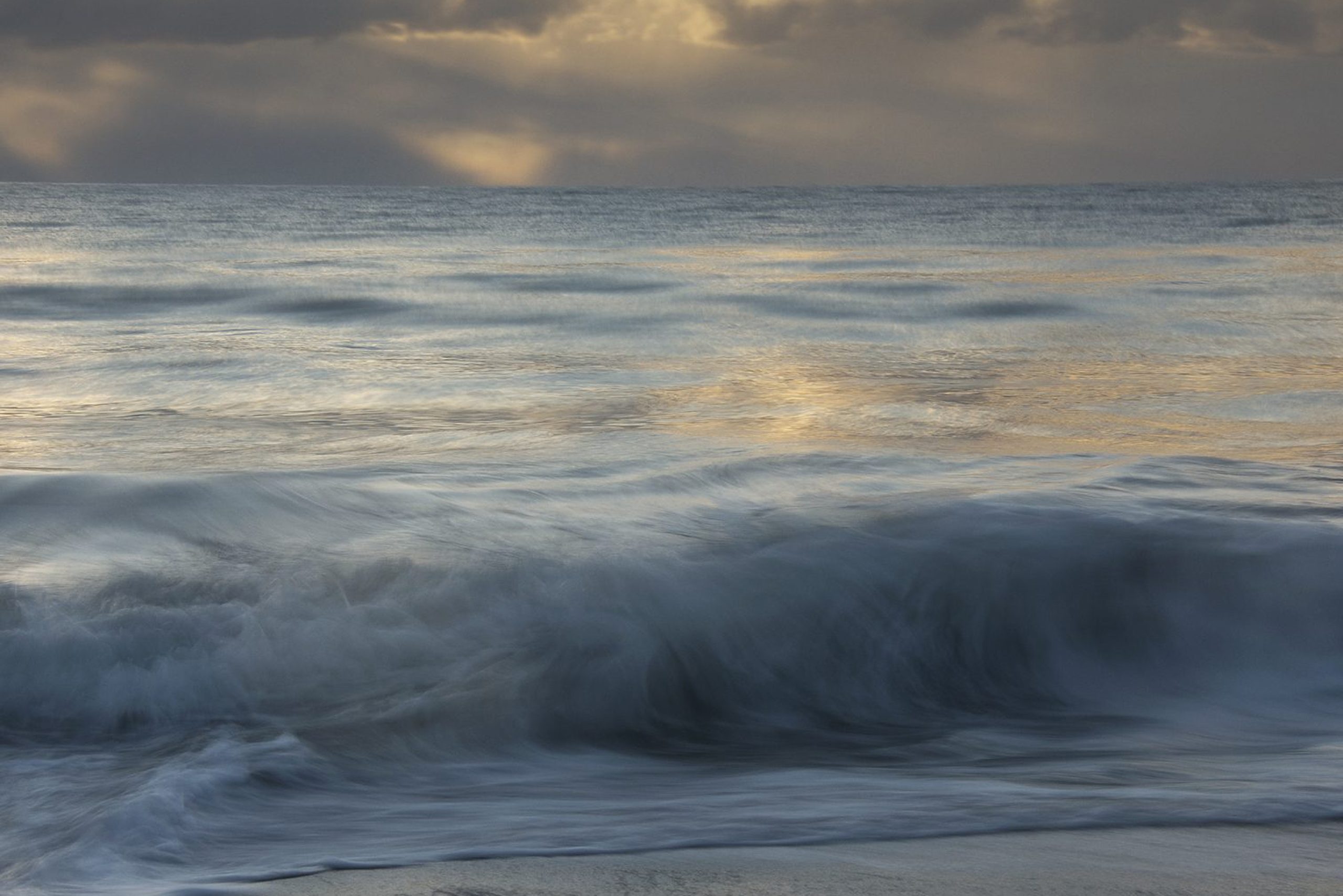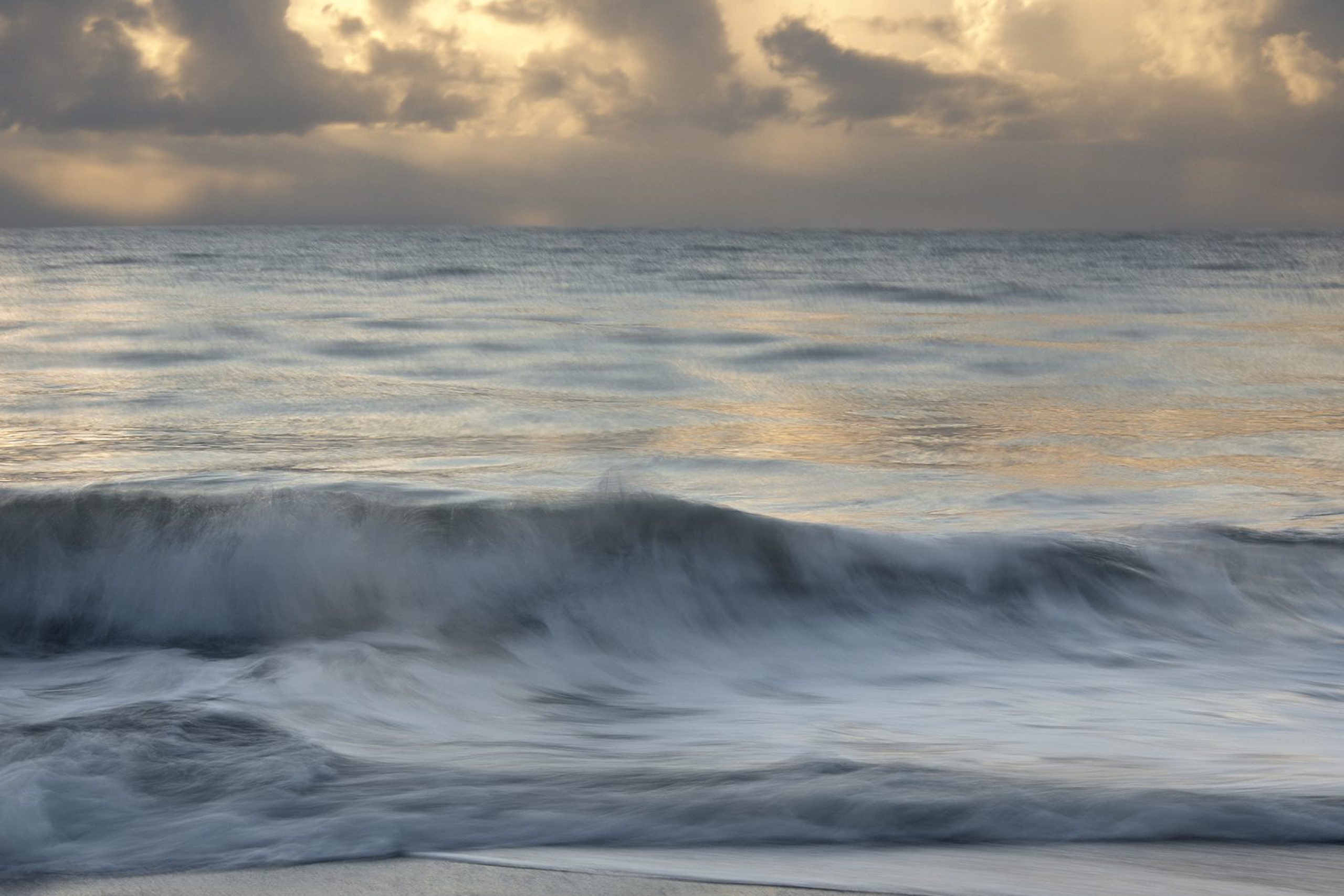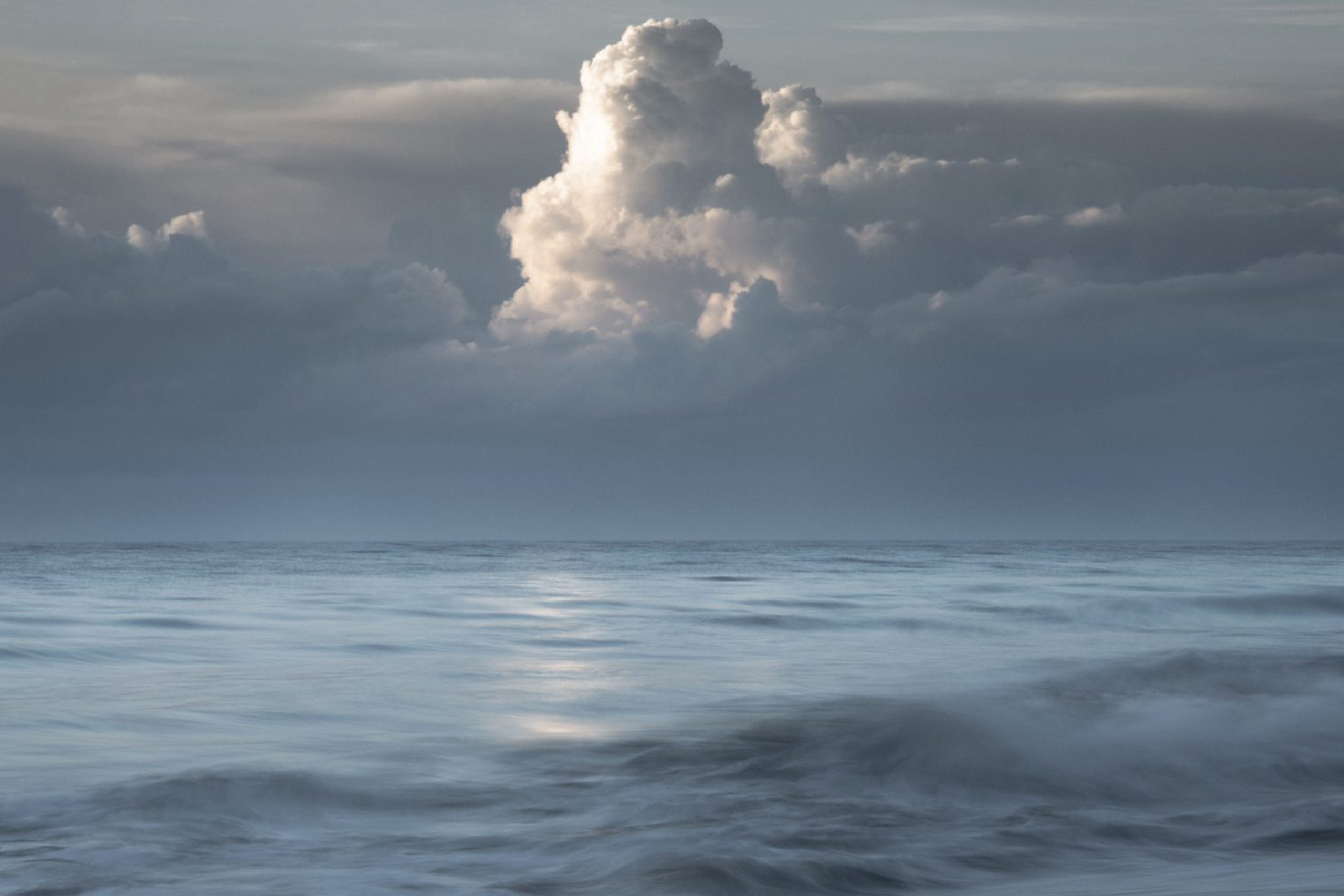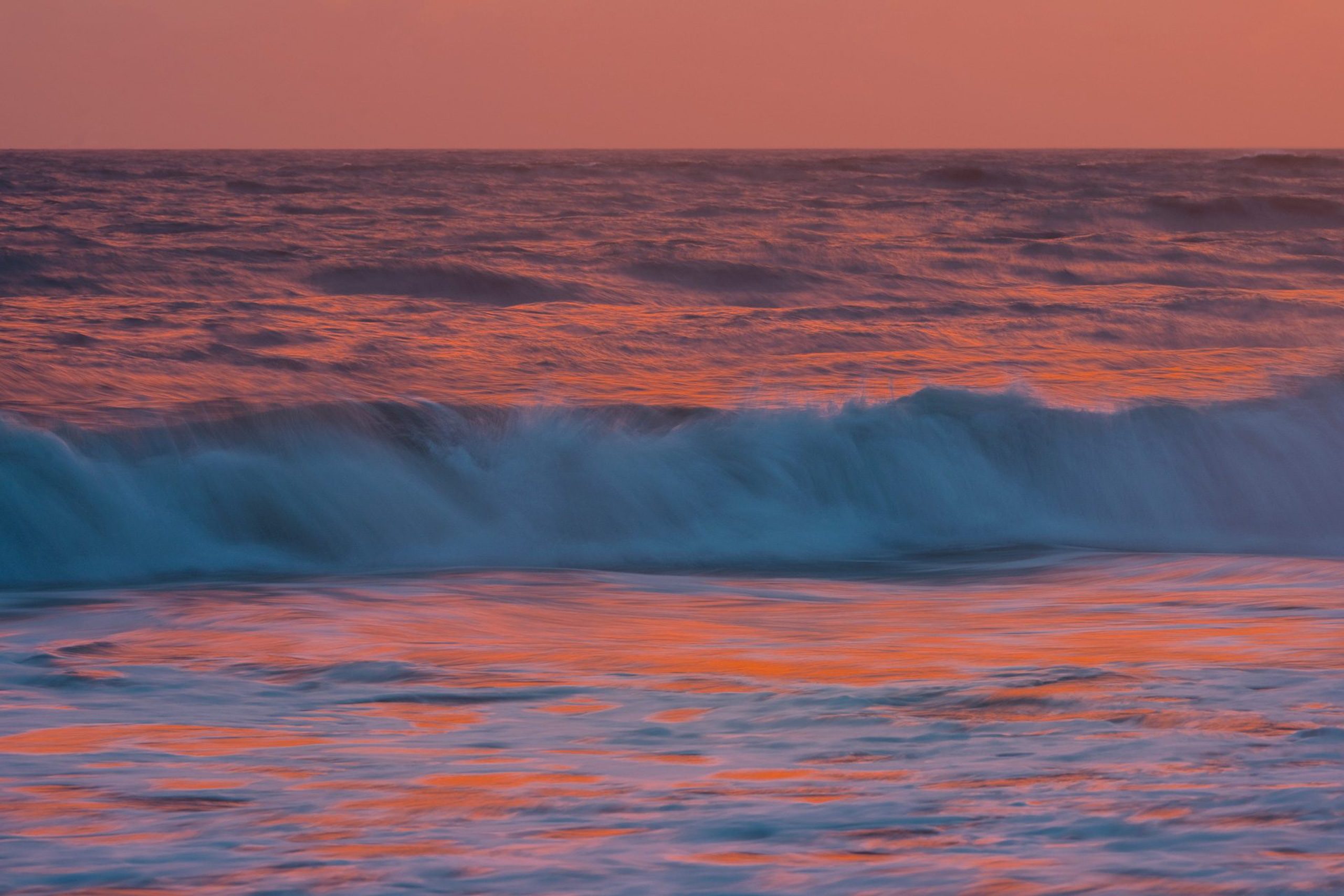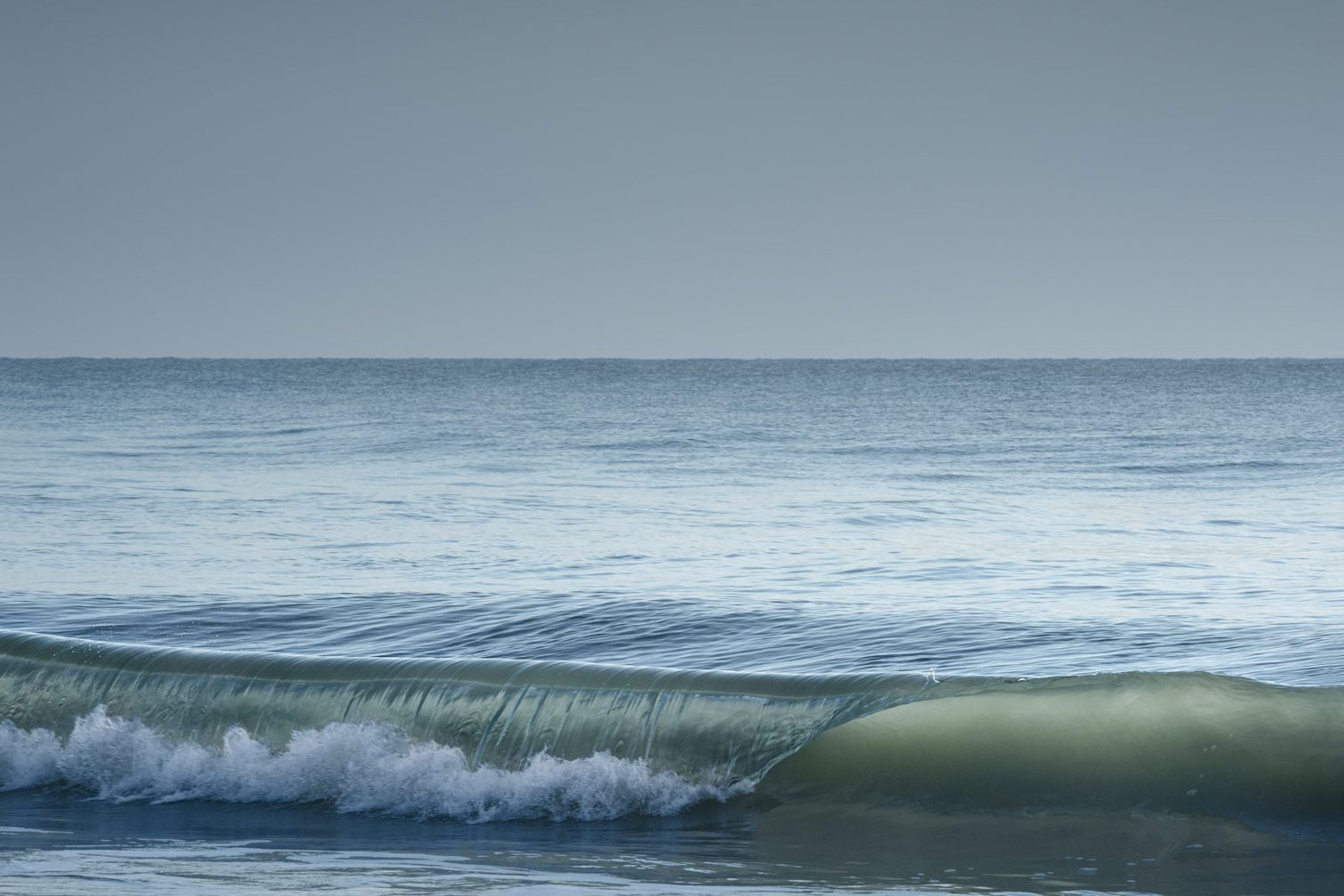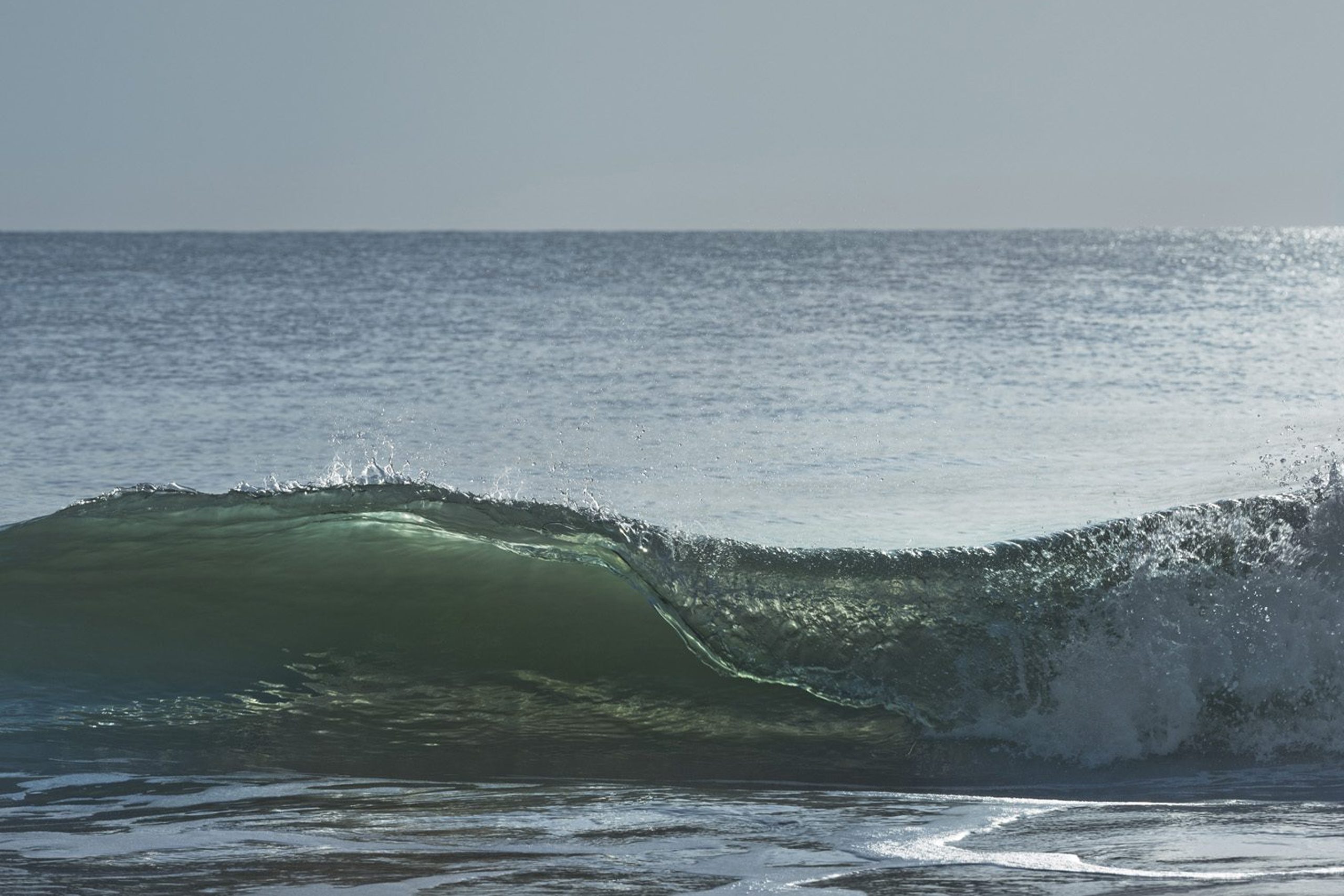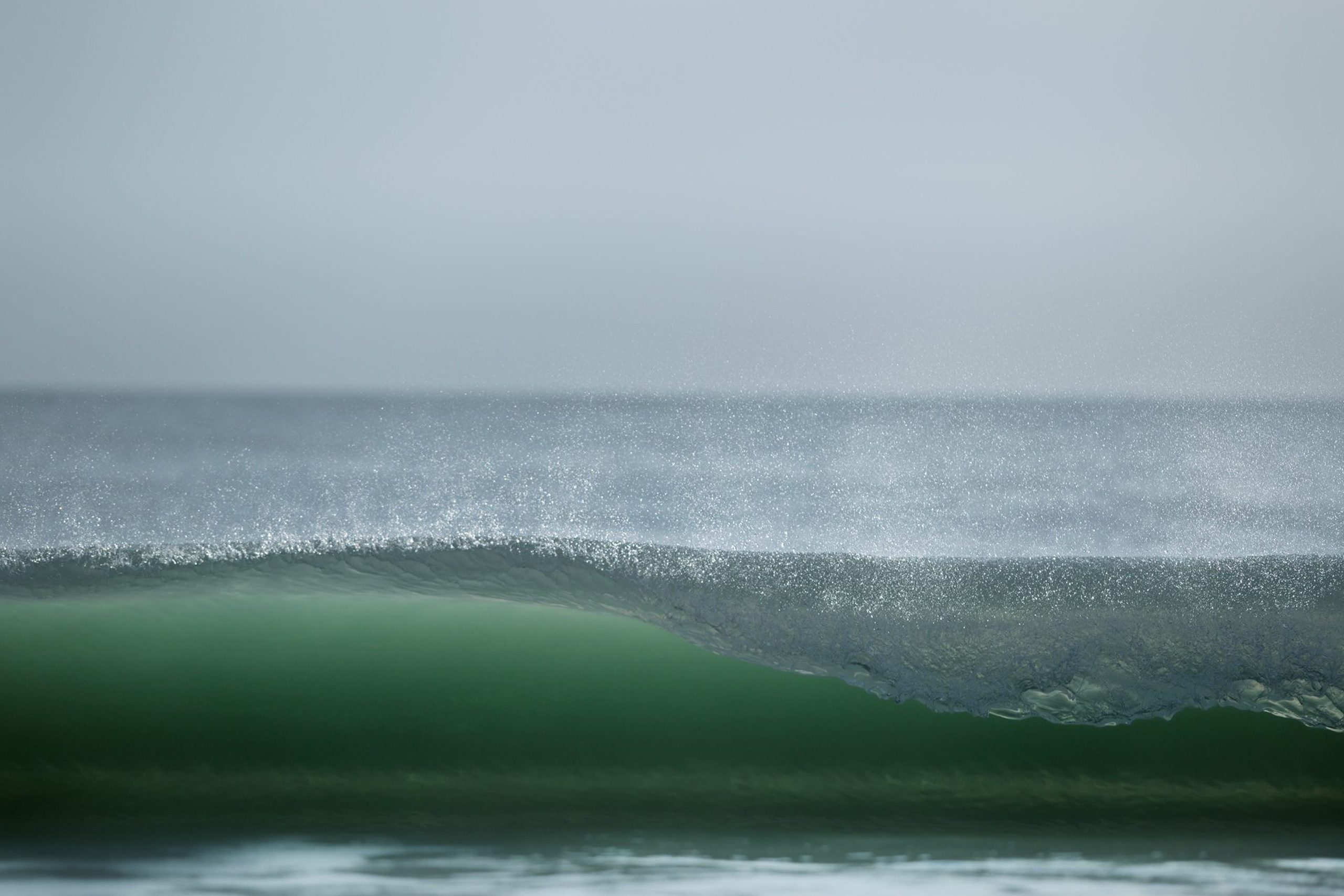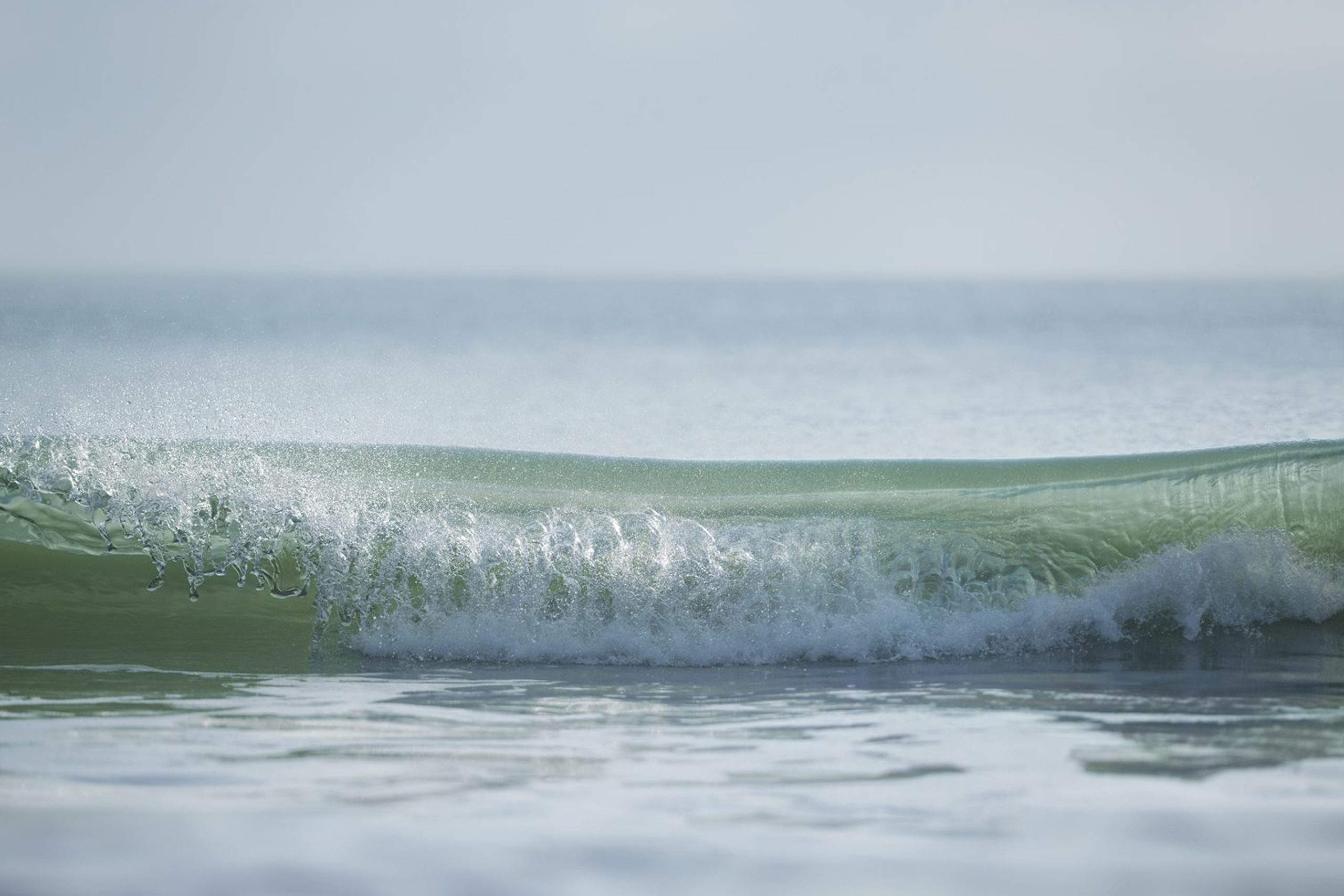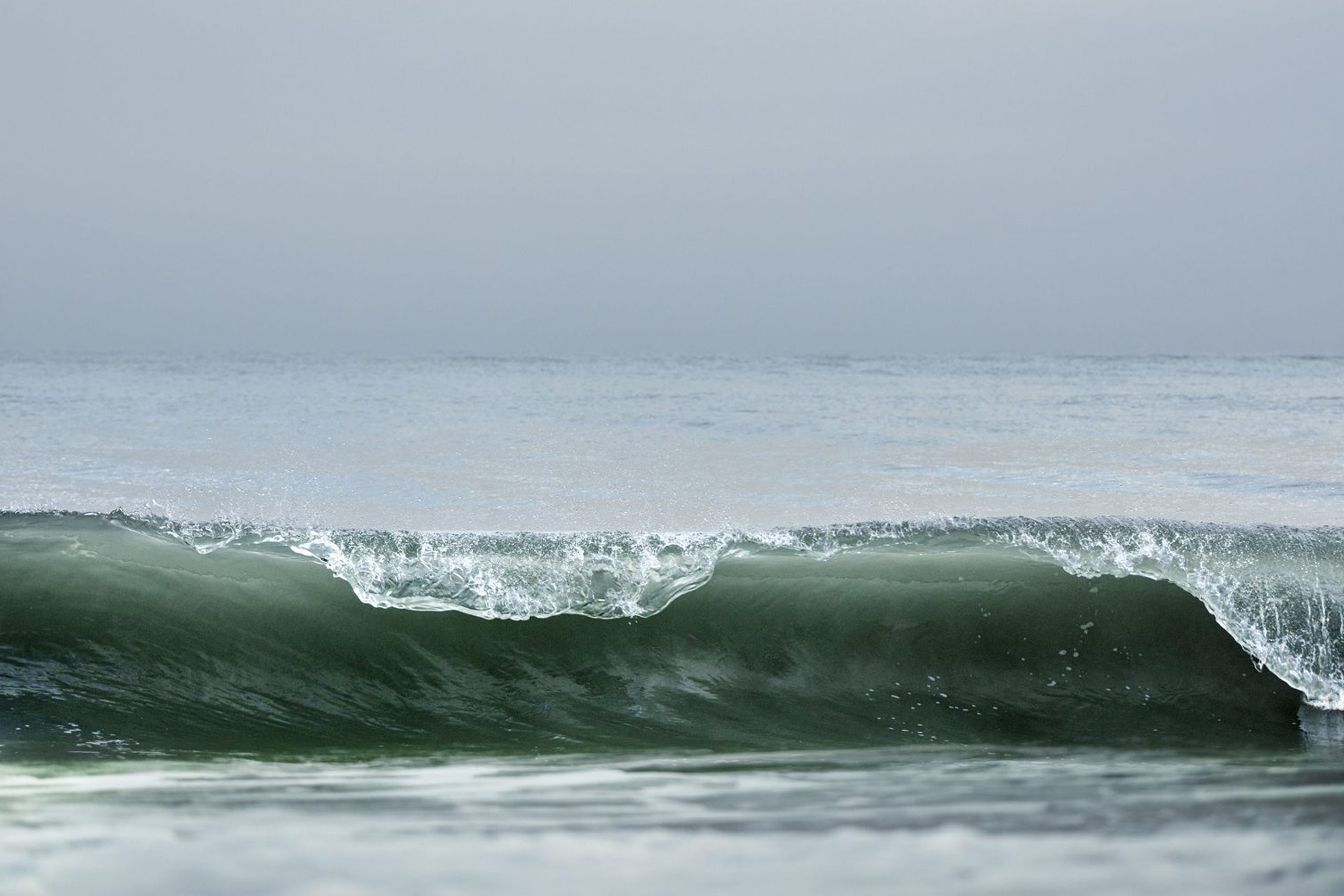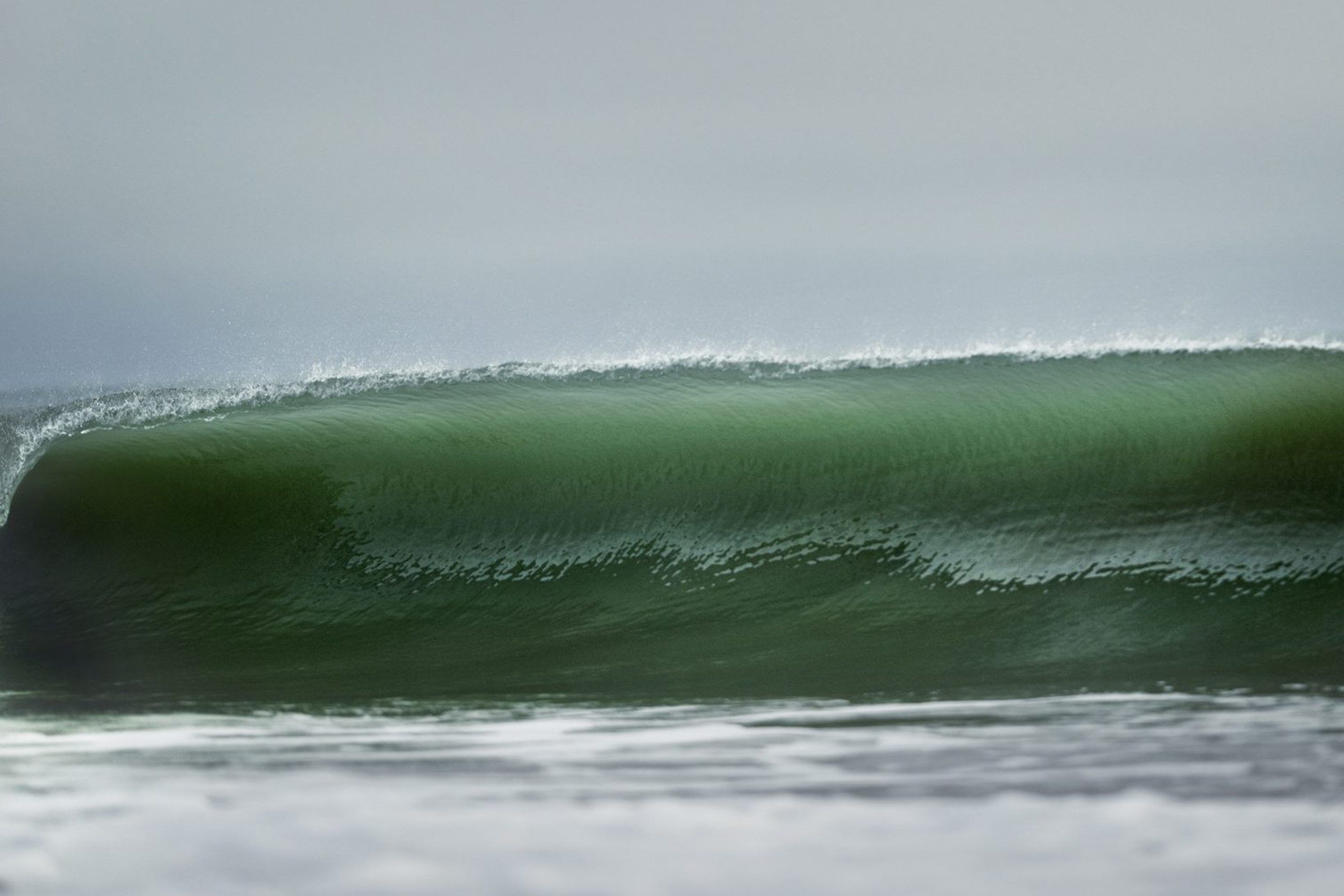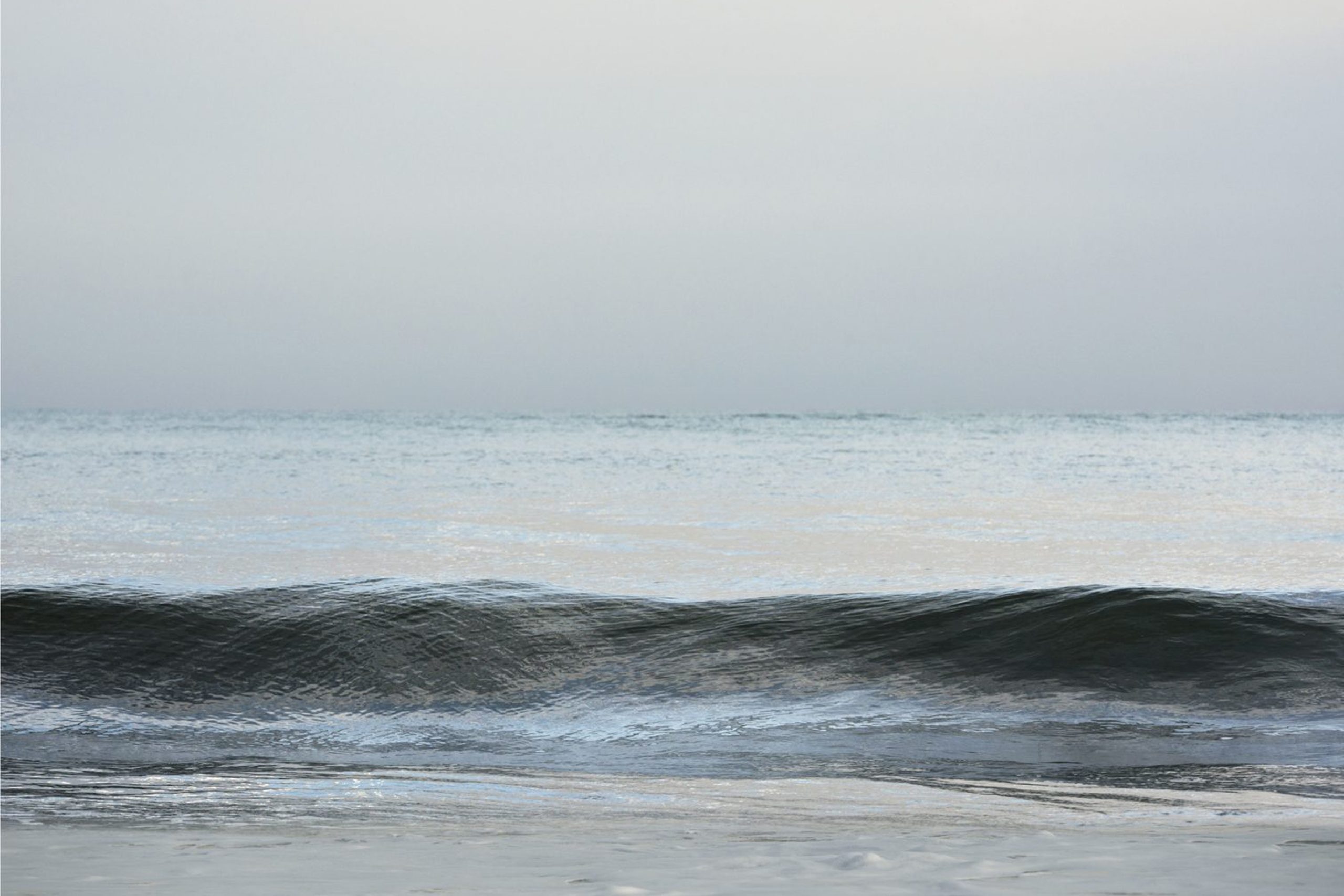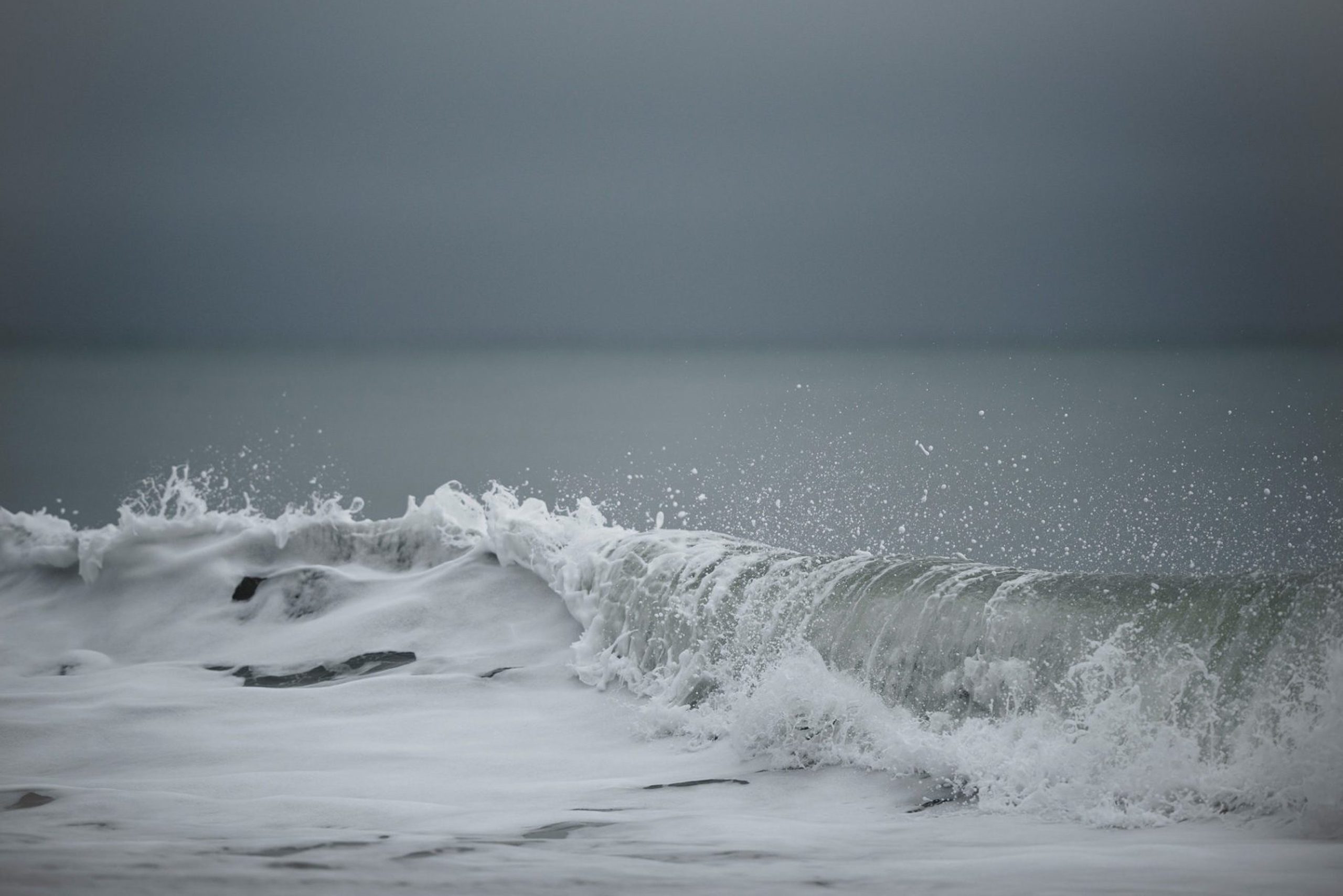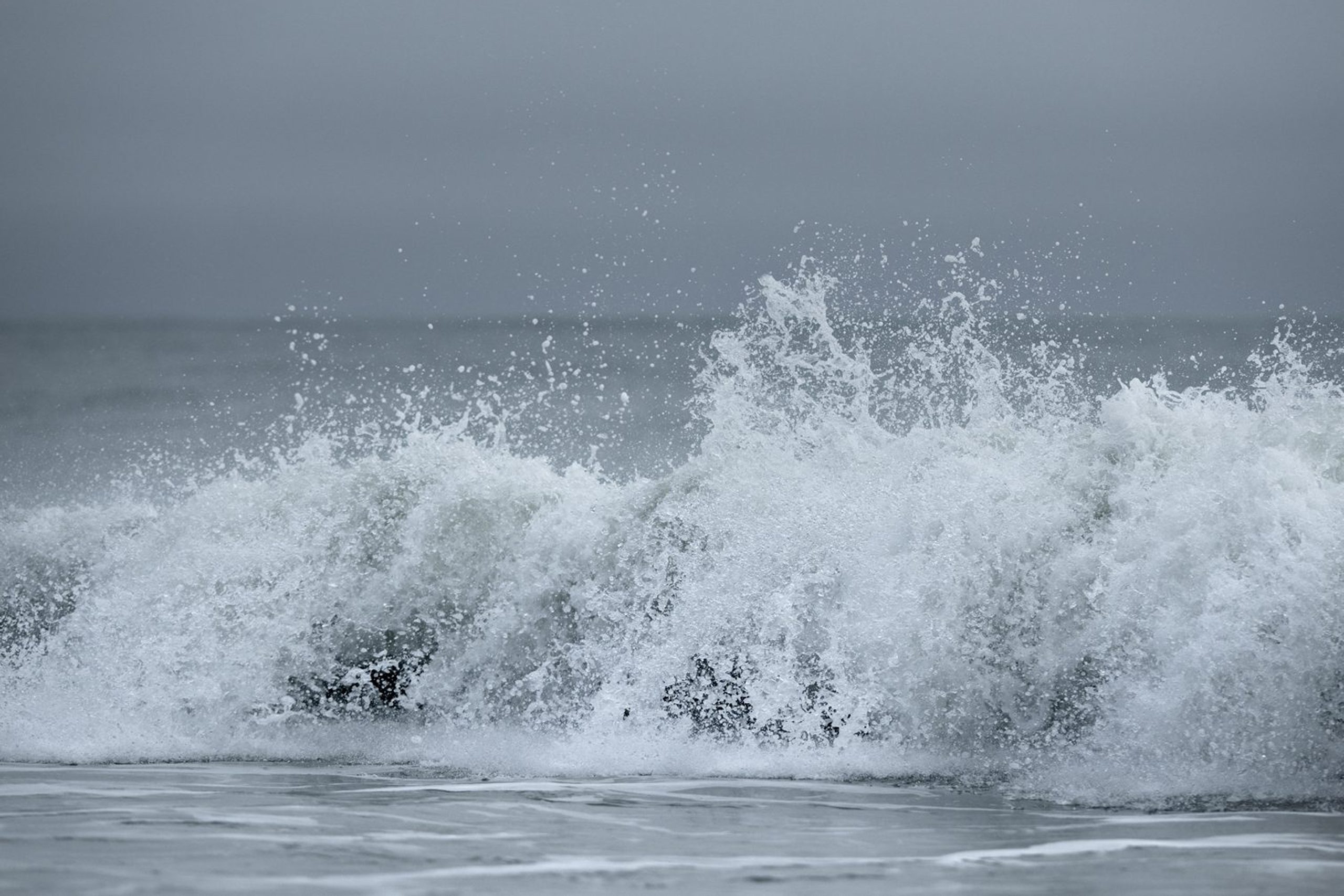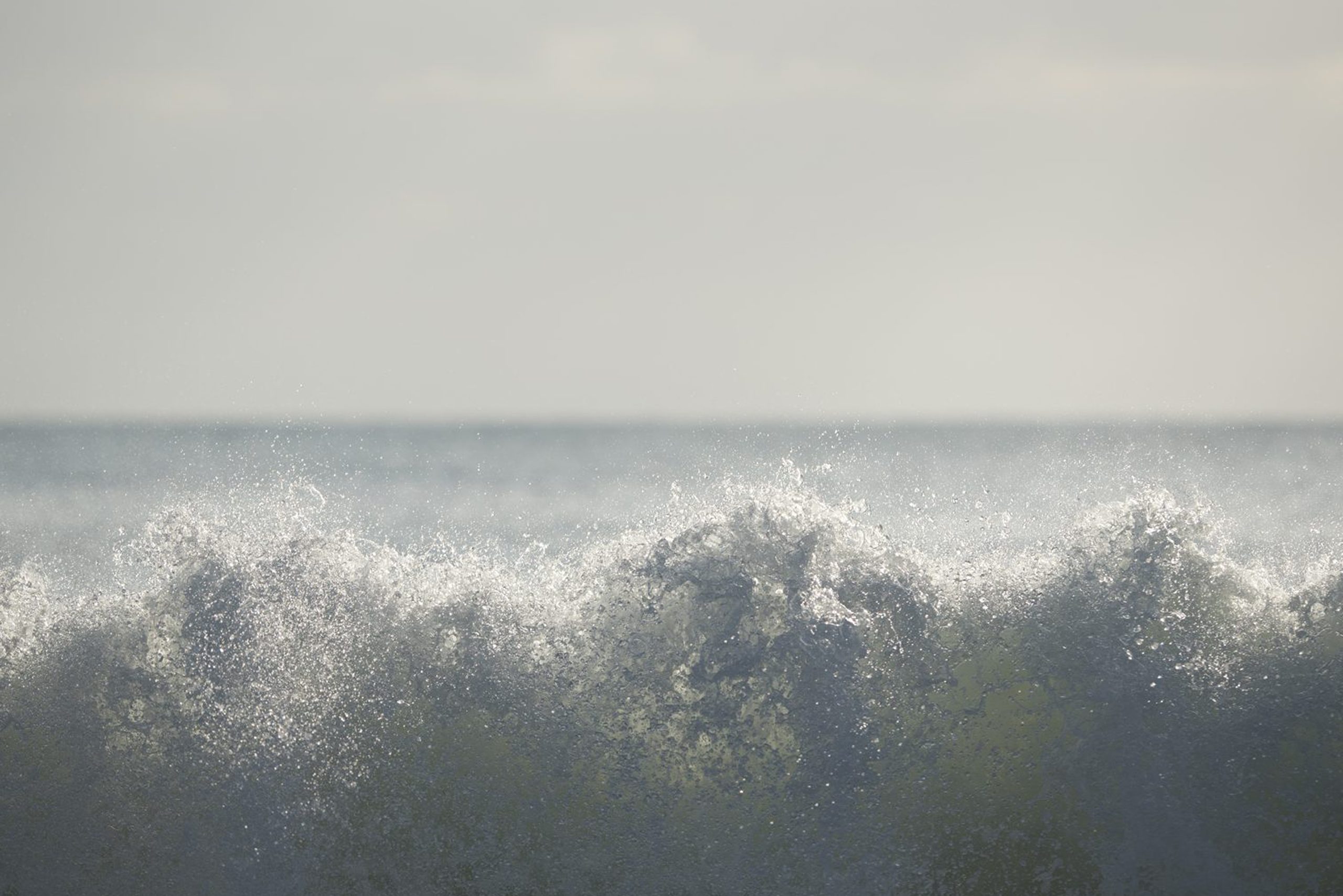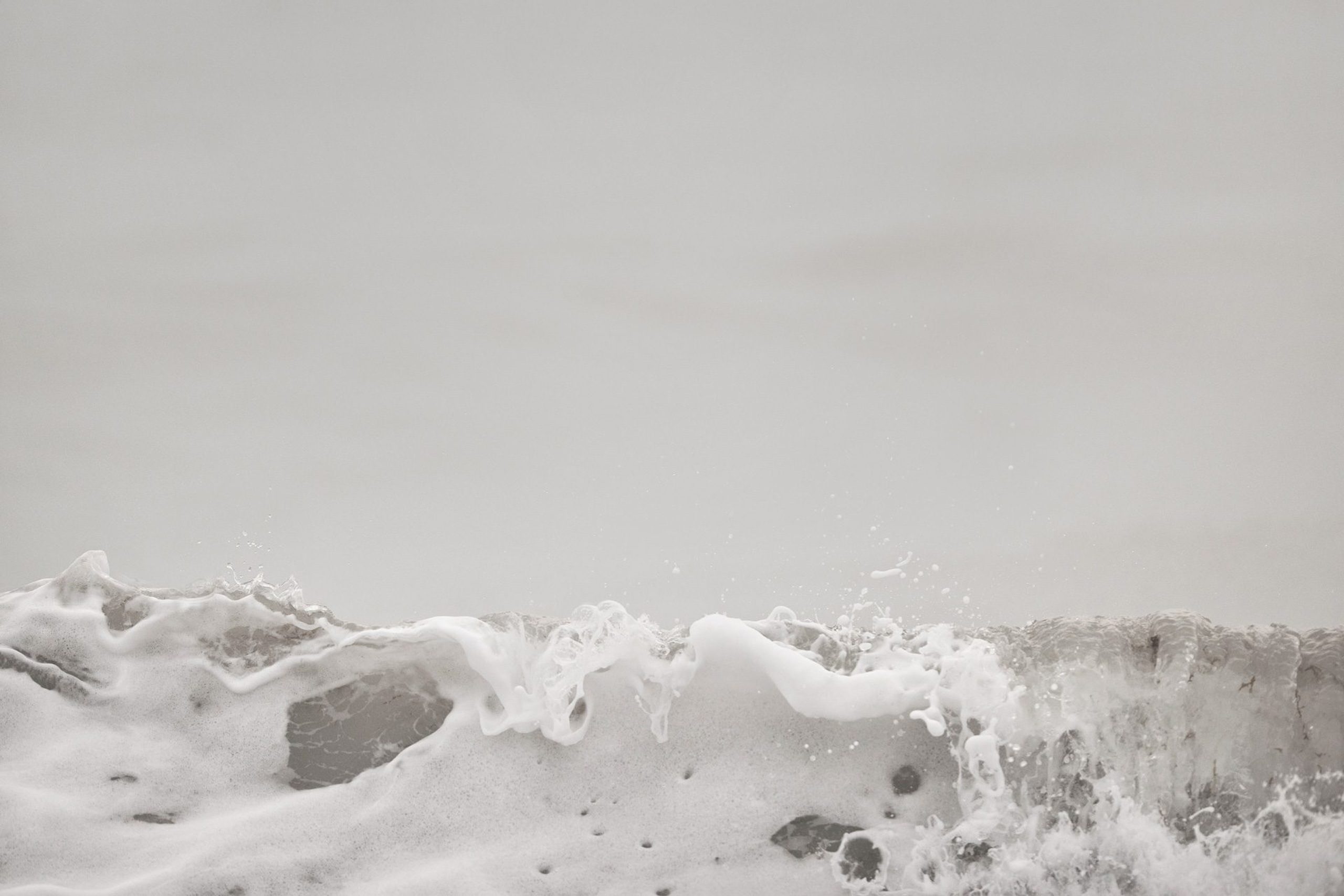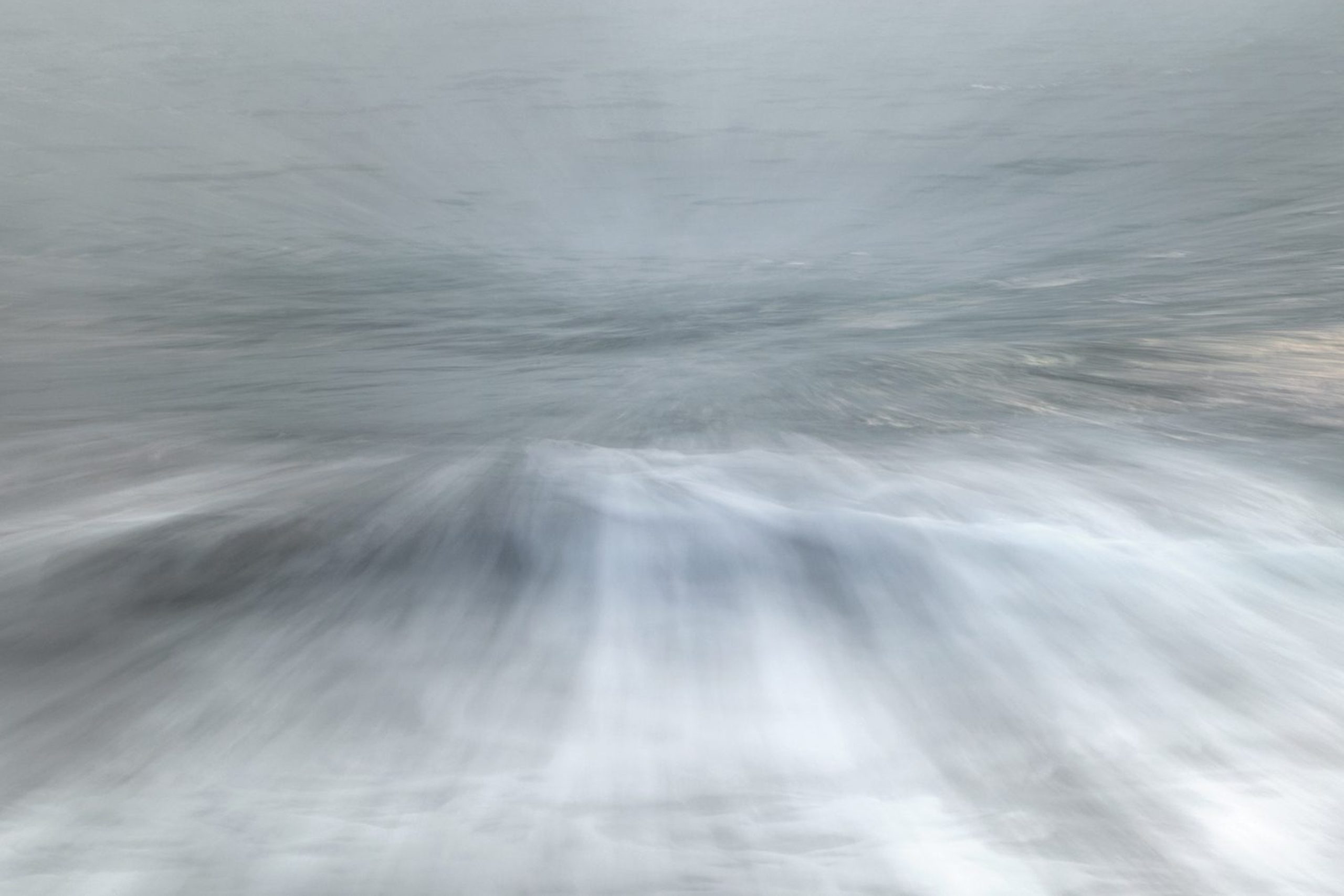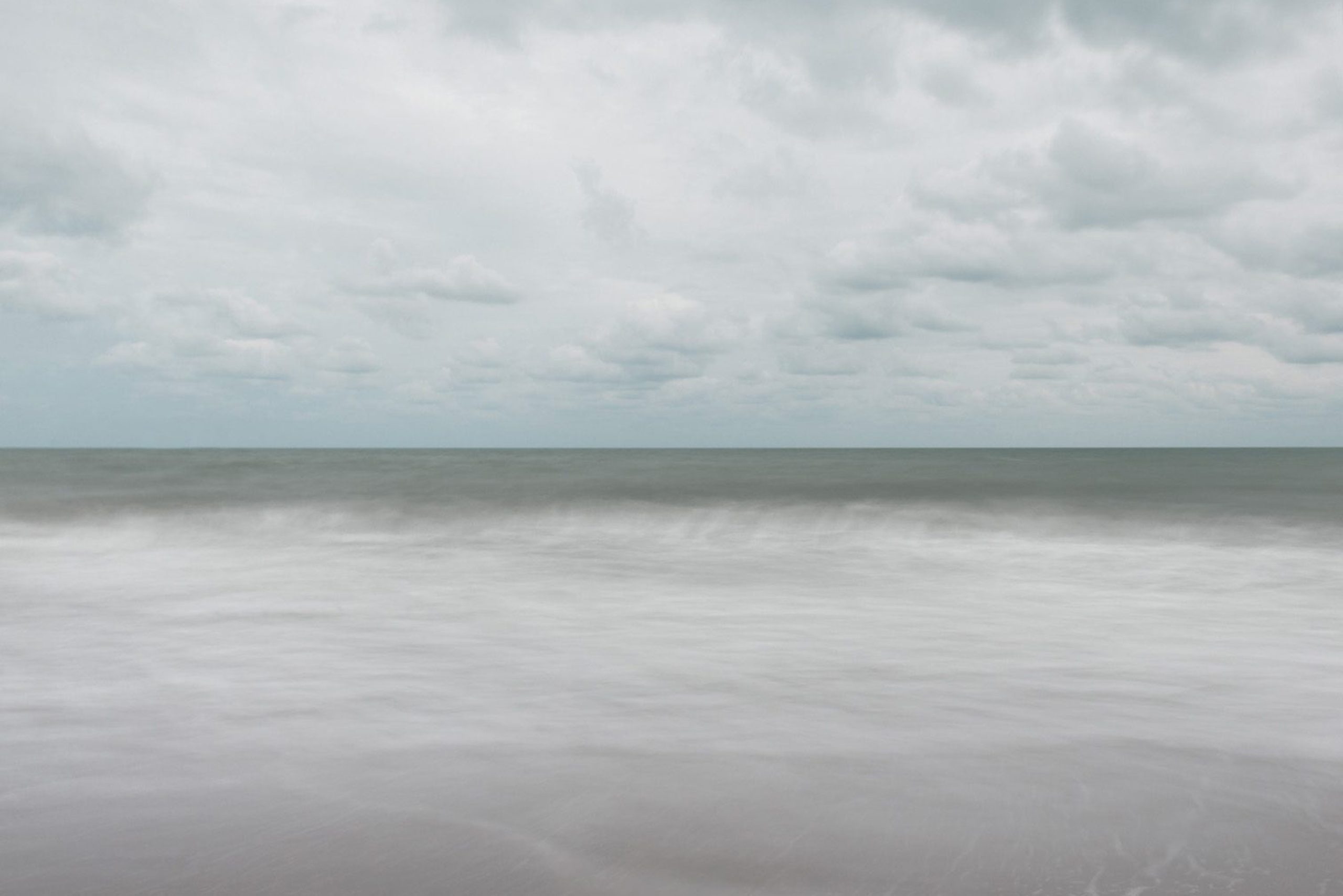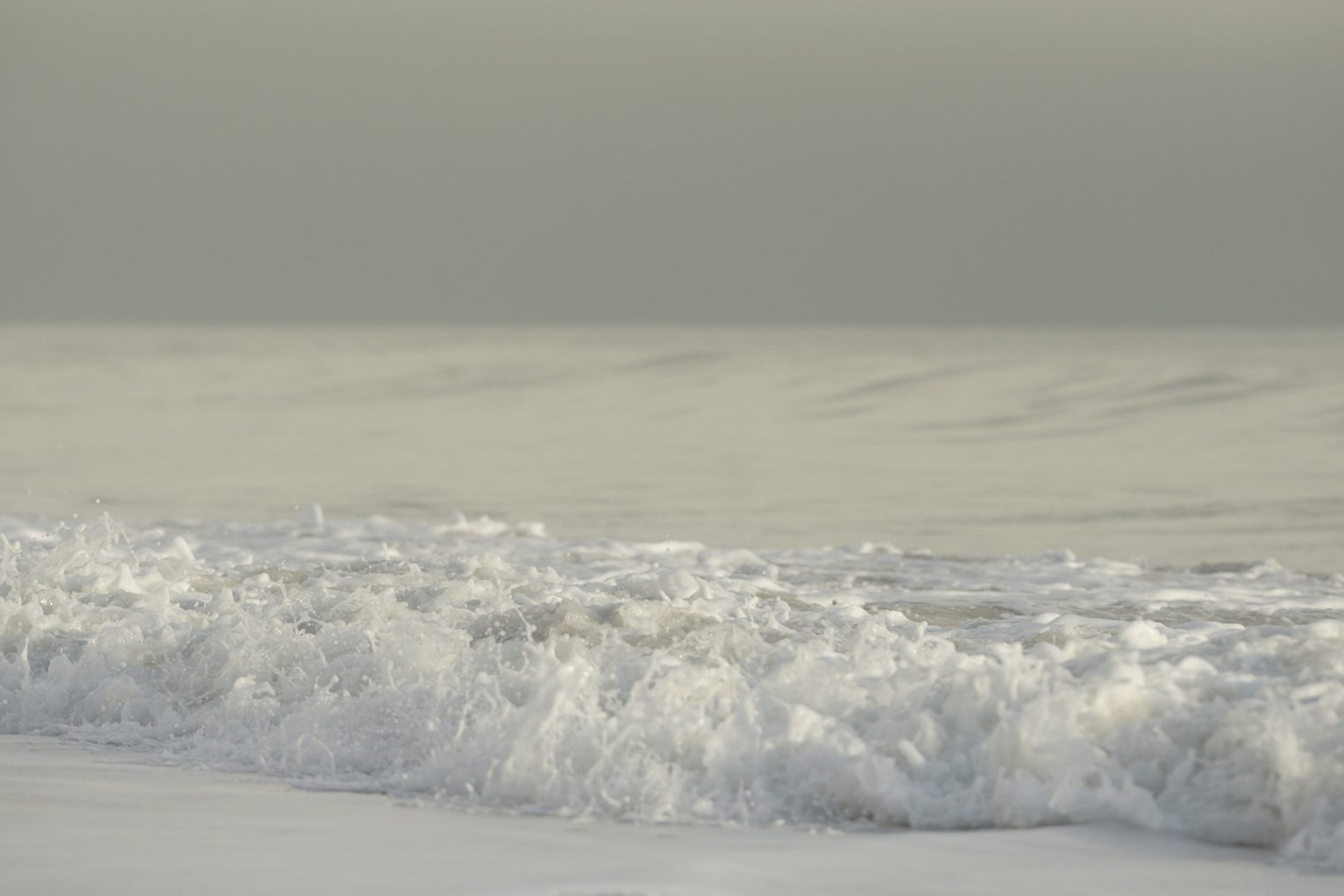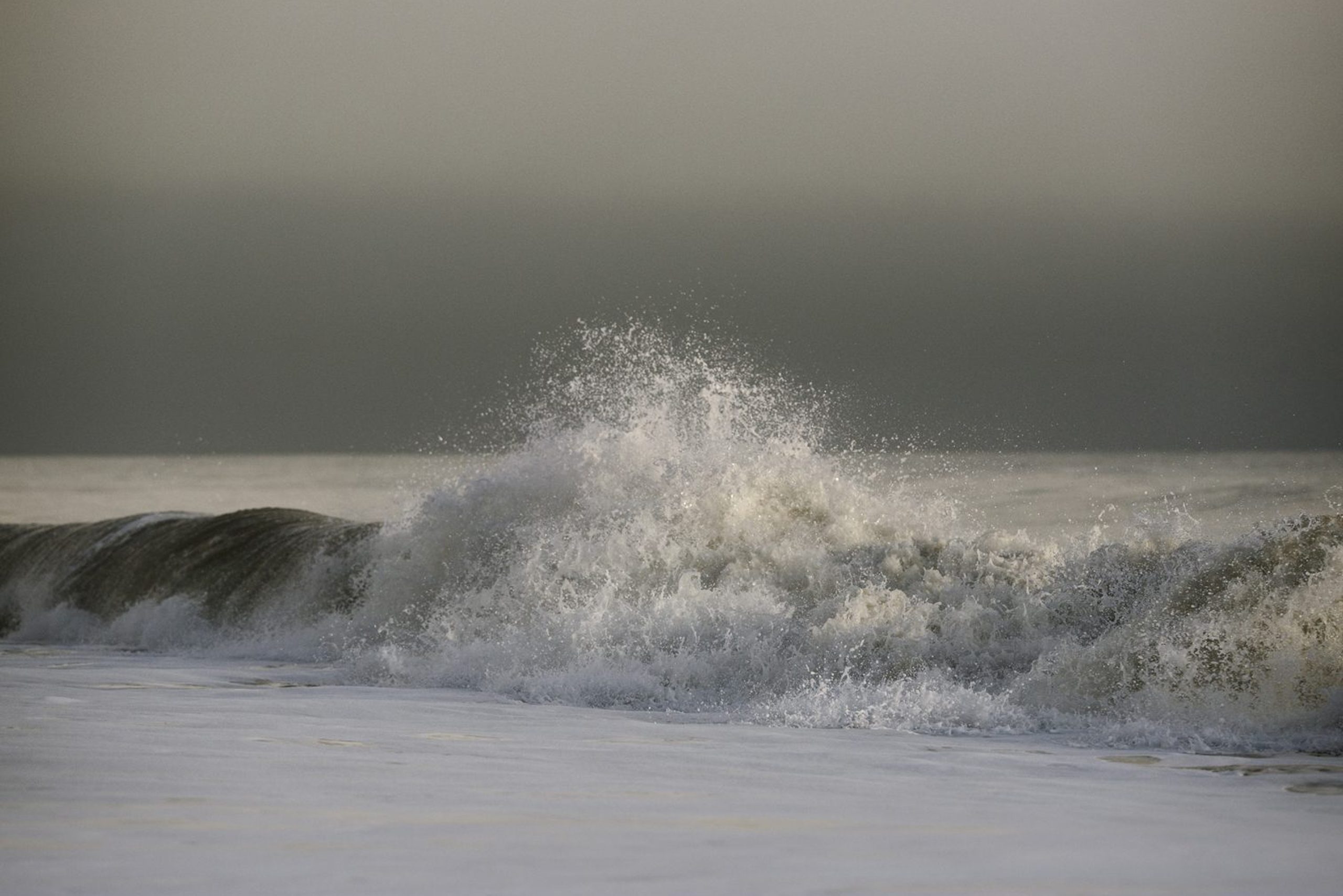‘Objective Allusions and Subjective Realities. Place in the work of Andrea Hamilton’ by Anthony Downey
‘Strange Seas’ by Ben Eastham
‘The Fugitive and Eternal’ by Jay McCauley Bowstead
‘The Appreciation of the Real’ by Laura Valles
OBJECTIVE ALLUSIONS AND SUBJECTIVE
REALITIES
PLACE IN THE WORK OF ANDREA HAMILTON
Anthony Downey
Director of the Master’s Programme in Contemporary Art at Sotheby’s Institute of
Art London and Editor-in-Chief of Ibraaz
‘The breaking of a wave cannot explain the whole sea’. Vladimir Nabokov
The sea is a vast, ultimately unknowable entity. Its surface, rather than inviting revelation, often acts as a further boundary to its unfathomable depths. For Herman Melville, who, as a sailor, traversed the world’s oceans from 1839 to 1844, the sea was an augur of a ‘hidden soul’ beneath ‘sweet mystery’. Likewise, for Joseph Conrad, who had a 19-year career as a sailor, the ‘sea never changes and its works, for all the talk of men, are wrapped in mystery’. This provocative unknowability has inspired much by way of literature and visual representation, with one of the key works of 19th century photography, The Great Wave, Sète, produced by Gustave Le Gray in 1857, becoming a seminal image in the development of photographic technique and history. Considered by many to be the most important French photographer of the 19th century, Le Gray produced an entire series of seascapes, of which The Great Wave, Sète remains the most famous. Looking at it now, it appears disconcertingly brooding and crepuscular, as if photographed at night. The motion of the waves also appears ethereal against an almost too bright sunlight. But the intention is there: Le Gray has given us an image of a wave in full motion, about to collapse in on itself and resume another course.
To freeze a wave in a period when such images needed exposure times measured in seconds was quite a feat, and Le Gray’s works are still held aloft today as heralding a new age of technical achievement in photography. The image, however, is a composite, which opens
up a number of further conundrums in this work. Le Gray used two negatives to produce this image, complementing the sea with a skycap from another negative. In adapting this approach, he
set up an ongoing creative tension in photography: the composite, artful image, being a subjective rather than objective form of representation, reveals how the eye sees nature, not a camera. There is clearly something of the sea’s unknowability, alongside a clear ambition to give a subjective, personalised view of the sea, in Andrea Hamilton’s seascapes. There is also, as there was in Le Gray’s work, an attempt to freeze or arrest an image that gives rise to an uncanny air of both subjective observation – Hamilton chose the place, timing, and setting for the images we see before us – and objective realism. Hamilton’s photographs are, after all, verifiable images of waves. And yet something else is happening here. If we consider the uncanny as an image or event that requires us to rethink how we look at or understand something, there is a sense that Hamilton’s petrified waves reveal both an emerging, nascent formation – the wave – alongside a highly personalised historical document of that wave’s passing. Time past and future collide
here to generate a specific account of a transient event that alerts
us to the sea beyond, in all its speculative unknowability. The breaking of a wave, as Nabokov wryly noted, cannot explain the whole sea, and Hamilton’s photographs would appear to revel in this knowledge.
One of the seminal ironies of photography’s emergence is that it was initially considered a threat to the historical claim of verisimilitude implicit in painting. Painters depicted the world and painting was
a window onto it. With the advent of photography from the early 1830s onwards, this historical claim was under threat inasmuch as photography gave an apparently more objective image of the world. Rather than see this in defeatist terms, artists took it as their cue to stop trying to paint objectively and mannerist realism gave way to impressionism, with some artists, Degas and Manet included, making copious use of photographs to develop the radical nature of their work. Hamilton’s images also straddle this reciprocal interconnectedness: on one level they are photographs, obviously, but on another they aspire to a painterly quality; they are objective images and, yet, entirely subjective in their focus. Photography here, in a reversal of historical fortunes, aspires to the condition of painting and yet presents itself as a precarious record of an actual, albeit transient if not fugitive, moment in time.
There are other contexts to be considered here, too numerous
to recount in full, that would include mention of the legacy of conceptualism as a key element in these works. Hamilton’s photographs not only display a degree of compulsion (they are
shot from the same location over a period of a year), they are also
a rational, almost scientific, take on the romantic appeal associated with the sea. Looking at them as a complete series recalls Sol LeWitt’s Sunrise and Sunset at Praiano, 1980, in which the artist methodically photographed the sea and sky over the Tyrrhenian sea, off Praiano, on the Amalfi coast. Again, this compulsion to photograph and capture a moment resonates with the inclination to reveal and yet occlude the reality of the sea at one and the same moment, a feature of Hamilton’s work that produces a productive tension throughout this series. This ‘freezing’ of time, the suspension of a moment, also lies at the heart of Hiroshi Sugimoto’s seascape series, produced from the 1980s onwards. Utilising an old-fashioned, large-format camera, Sugimoto would make exposures of varying duration until all we are left with is a horizon line of light and dark regardless of where the image was taken.
How do you freeze a moment that is already frozen? In Hamilton’s seascapes, movement is everything. In her icescapes, however, we see a primordial frozen, almost fossilized, landscape that is frozen yet again in a photographic image. And yet another anxiety emerges here: the ice floes and icebergs we see before us are in a process of dissipation, melting in an unrelentingly warming sea. Again, Hamilton, like Le Gray and others before her, has revealed something of nature through the camera lens, focusing our attention not on the stillness of these images but the underlying movement. Historical precedents abound here, and we could observe Caspar David Friedrich’s take on the sublime in paintings such as The Monk by the Sea, 1810, and the monumental fractured icescapes of The Sea of Ice, 1823-24. There
is nevertheless a further ecological, if not practical, element to Hamilton’s icescapes that attenuates the allusive nature of Friedrich’s paintings: every attempt to represent this frozen landscape is yet another poignant record of its passing.
At the outset, we noted that Hamilton’s systematic, compulsive attempt to freeze the waves in her seascapes, renders them all the more metaphysically allusive, subjective, and painterly. In representing the frozen Arctic tundra of Iceland, we also see movement, but of a particularly insidious kind, the sort that could herald the rising
of sea levels worldwide and a series of environmental catastrophes. The sea, to gloss Melville, may be indeed a sweet mystery, but it may also reveal its mutinous depths to us in the foreseeable future and, eventually, encroach and submerge the very landscapes we see in these images.
STRANGE SEAS
Ben Eastham
Founder and Editor of The White Review
The close observation of landscape has since time immemorial provided philosophers, poets and artists with a subject through which to meditate upon the relationship of humanity to the world it inhabits. In the vastness of nature men and women have long
sought what Wordsworth termed the ‘tranquillity’ necessary to ‘recollect emotions’ and thereby give coherent expression to the ‘spontaneous overflow of powerful feelings.’ 1 Nature provides us with the measure against which to gauge the consciousness of our feelings towards ourselves and others, the scale onto which we pitch the notes of our fleeting existence.
The primary aspect of nature’s immensity is its apparent timelessness. When, in ‘Dover Beach’, Matthew Arnold perceives the ‘eternal note of sadness’ in the mantra of the English Channel’s returning tide and speculates that ‘Sophocles long ago / Heard it on the Ægean’ 2, he establishes a link across time and cultures through the contemplation of the sea. That transcendence of time and place is evident, too, in the near abstract seascape photographs collected together in Andrea Hamilton’s Water Works. Nature is presented to us here as that which endures, a tie to the past and the future.
Our ancient understanding of nature as constant and, though cyclical in tides and seasons, unvarying has in the past thirty years been undermined by our recognition of the havoc that human industry has wrought upon the climate. The apparently ageless
Romanticism of these awe-inspiring photographs, then, is tempered by our contemporary awareness that the sea, though to the eye unchanging over the course of centuries, is shifting as a consequence of man- made climate change. Sea levels are rising to threaten settlements occupied by millions of people across the world and images of an unsettled ocean remind us that, even in these days of remarkable technological development, nature retains the capacity to destroy.
The frightening, ungovernable power of the ocean and the composed security of ice provides this exhibition with an aesthetic tension
that reflects the Kantian distinction between the beautiful and the sublime. The former quality is in Kant’s formulation
‘connected
with the form of the object’3, and therefore perceptible only in that which is coherently and intelligibly organised (and thus reassuring). The closely and predictably patterned perfection of ice formations corresponds ideally to that criterion.
The sea, by contrast, is characterised by its boundlessness, and inspires in us the awareness of a force both indifferent to humanity and capable of overpowering it. In the combination of pleasure and fear this spectacle excites can be found the fullest experience of the sublime.
Furthermore, the juxtaposition of these portraits of the Atlantic Ocean against photographs of ice formations in Alaska and Iceland establishes a neat allegory for the processes that threaten the world in which we live. The serene prettiness of light refracted through ice gives way to walls of water advancing upon the shore, the austerity of the images’ composition (the plane typically divided into three sections by the dividing lines of wave and horizon) a reflection of the inhumane power at work.
Narrative allusions to the state of our planet are nonetheless secondary in these extraordinary photographs to Hamilton’s ability to capture the tension, splendour and drama of water in its natural states. The dynamic, climactic composition of these breaking seas, with their deep colours and richly textured passages, counterpoints the icescapes’ economy of light and line. In combination, these elemental images suggest movement and stillness, noise against silence, delight cut with fear.
The effect is in some cases redolent of Turner’s turbulent seas or Friedrich’s mist-obscured mountains in the sense that the human figure, and by extension the figurative style, is dwarfed by a power that can only be expressed in prototypical abstraction. These images take that impulse further, with the absence of any fixed reference points making it difficult for the observer to triangulate scale (how different these photographs would feel if they contained a body, a ship, their taker’s cast shadow). We are set adrift into these extra- terrestrial vistas, not knowing in some cases whether the jewels of ice that loom above us are boulders or pebbles, whether the waves that break are ripples or roar.
The sense of self-abandonment is liberating, calling to mind Byron’s ‘pleasure in the pathless woods […] rapture on the lonely shore.’ 4 That sensation we might equate to Wordsworth’s aforementioned tranquillity, the state of being he associates with poetic creation. By these means Andrea Hamilton’s extraordinary photographs remind us that, even and perhaps especially in this Anthropocene 5 era, nature is the force against which humanity is defined. By observing it, by engaging with it, even by surrendering to it, we gain for ourselves a greater understanding of what it means to be alive in the world.
1 William Wordsworth and Samuel Coleridge, Lyrical Ballads: With a Few Other Poems, London: Penguin
Classics, 2006.
2 Arnold Matthew, ‘Dover Beach’, New Poems, London: HardPress Publishing, 2013.
3 Immanuel Kant, ‘Second Book: Analytic of the Sublime’, The Critique of Judgement, Oxford: OUP Oxford, 2008.
4 Lord Byron, ‘Childe Harold’s Pilgrimage’, Canto 4.
5 Eugene F. Stoermer identified the Anthropocene as the geological era in which we now live, defined by humanity’s influence upon the Earth’s ecosystems. The phrase, meaning ‘the new human era’, has recently become popular among ecologists eager to formally recognize the wide-ranging effects of agriculture, urbanisation and industrialization upon nature.
Tidal Resonance
The sky in the distance is a sheet of light grey-blue, fading subtly from a darker and more intense colour where it touches the water, to a lighter warmer hue as it ascends. Beneath this wash of sky the sea sparkles in bands of turquoise and cerulean then fades to relative calm, white and grey reflections and patches of a neutral orange- pink that quieten the gorgeousness of the vivid hues at the horizon. In the foreground, a thick black line is crosshatched with white and blue: the swollen incoming wave cast into shadow by the sun’s low light. Curving up towards us, the sweeping lines of texture of the wave’s crest describe its alternating concave and convex surface, and cause us to anticipate a splash or crash of water that our logical minds know will never come.
In addition to representing the sea, Andrea Hamilton’s photographs in her Tidal Resonance series are, of necessity, also an exploration
of light and – perhaps strangely for a static medium – of time and movement. Hamilton’s sea, whether illuminated in a translucent viridian-green, agitated to a soapy opaque lather of white, or sparkling in a tint of opalescent grey, is defined by its motion, its currents and tides and by the reflection of the ambient light, the sky and clouds that surround it. As Charles Trenet put it:
‘La mer, Qu’on voit danser, Le long des golfes clairs, A des reflets d’argent, Des reflets changeants, Sous la pluie.’
(‘The sea that we see dancing along the clear bay has silver shimmers, changing beneath the rain.’ 4)
Roland Barthes’ Camera Lucida (La Chambre claire) of 1981 emphasises photography’s links to concepts of the moment and the encounter. Barthes’ text, steeped in grief at the death of his mother, is methodologically undermined by its inability to move beyond the author’s subjectivity, his longing to ecapture and experience that which is lost. Nevertheless, Camera Lucida is revelatory in its evocation of the (quasi-mystical) power of the photographic image, its evanescence and immediacy, and its ability to evoke profound emotional responses:
‘I had identified truth and reality in a unique emotion, in which I henceforth placed the nature – the genius – of Photography.’ 5
‘the Photograph […] is still mortal: like a living organism, it is born on the level of sprouting silver grains.’ 6
Like Barthes’ ‘sprouting silver grains’ Hamilton is frequently drawn to subject matter that is fleeting, ephemeral, and in flux. In her Tidal Resonance series what resonates is the capture of a moment: the crest of a wave at the point of caving in on itself, the inexorable rolling movement of the sea stilled, its spray forever hanging, like finely netted lace suspended before the horizon. This freezing of a moment of animation unites the Luminous Icescapes and Tidal Resonance bodies of work as much as their aquatic and pelagic themes. But along with this engagement with the transitory, fugitive and protean, apparently antithetical notions of the infinite and archetypal also characterise Hamilton’s practice.
The ocean, whether calm or enraged, is a quintessential object
of contemplation, forever changing but simultaneously eternal
and demiurgic. In its mode of contemplation Hamilton’s practice mirrors the work of Tacita Dean, an artist whose arresting images, often employing natural themes, compel not through the literalness of their representation, but through their ability to embody ideas of encounter, history, time and memory in the natural forms she evokes.
The recurrent motif of the sea has served in Dean’s work as a repository of narratives from which concepts of exploration and myth frequently emerge. In Dean’s 2001 film The Green Ray the artist’s spoken narration tells the story of the enigmatic phenomenon from which the piece takes its title:
‘When the sun sets into a clear crisp horizon, and when there is
no land in front of you for a few hundred miles, and no distant moisture that could become – at the final moment – a back-lit cloud that obscures the opportunity, you stand a very good chance of seeing the green ray. The last ray of the dying sun to refract and bend behind the horizon is the green ray, which is just slower than the red or the yellow ray. Sailors see them more than the rest of us and they have come to signify, for some, the harbinger of great change or fortune in their lives.’ 7
The film’s unwavering focus on the horizon lends it a meditative quality: the yellow orb of the sun disappearing beyond the curvature of the earth’s surface as the planet spins its predetermined course. At the end, just as the sun descends beneath the horizon far out at sea, we see – or believe we do – the elusive green ray, a momentary flash.
Sontag writes that through over-exposure we can become inured to naturally beautiful or spectacular phenomena ‘The image-surfeited are likely to find sunsets corny; they now look, alas, too much like photographs.’ 8 It is certainly true that excessive repetition risks depleting the power of an image: the impressionist paintings that were once rejected from the appalled Paris Salon are now printed onto coasters and chocolate boxes. And I have found my own experience mediated by popular images: on a July holiday in Paris
a friend and I went down to the right-bank of the Seine, where a temporary bandstand had been set up and musicians were playing. The sun began to set behind the Île de la Cité, turquoise, cyan and magenta, Notre Dame was bathed in a vivid pink, the sky was ablaze: ‘It’s like a cheap postcard’ we said, but it was still wonderful,all the cynicism in the world could not have prevented it from being so.
